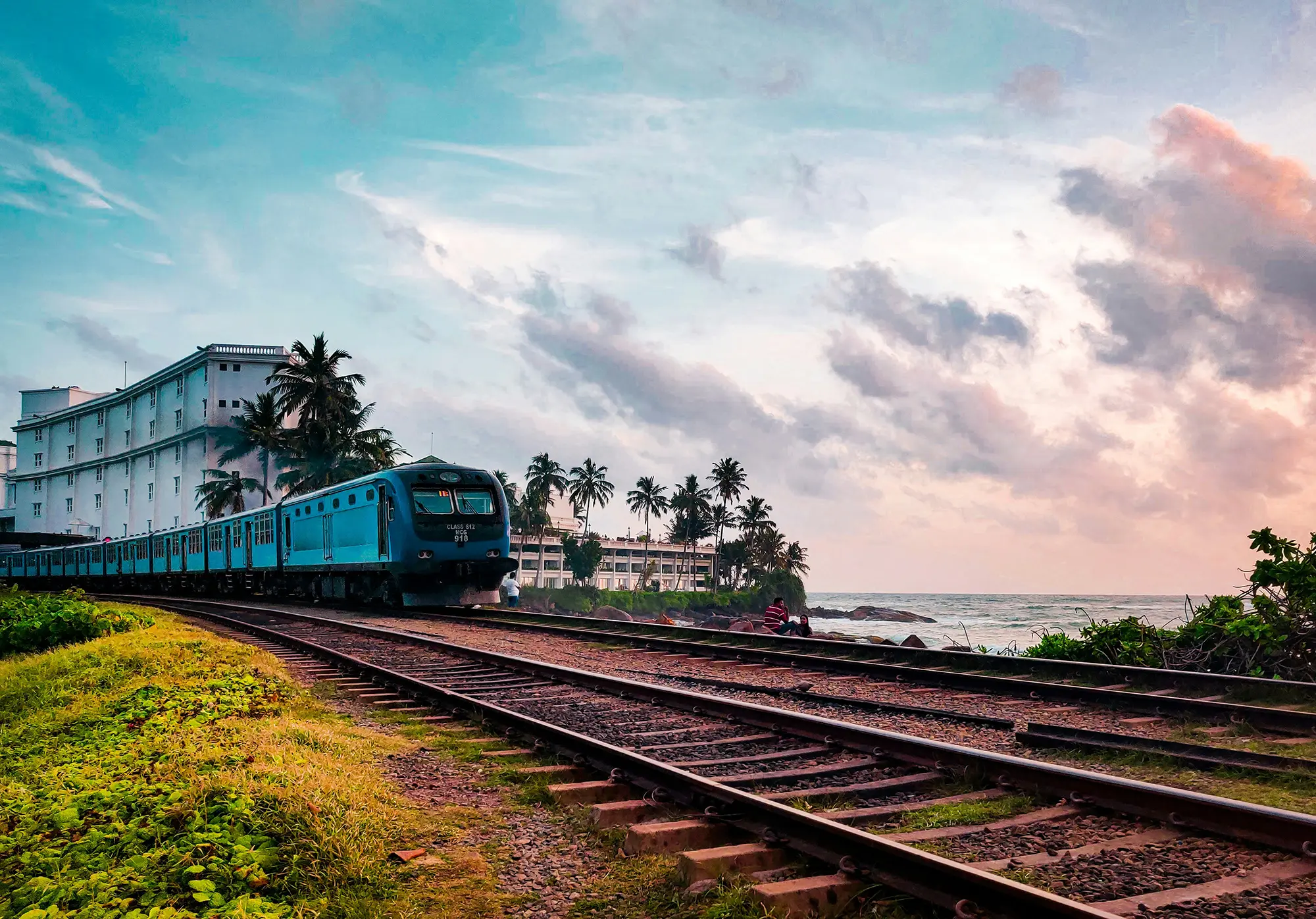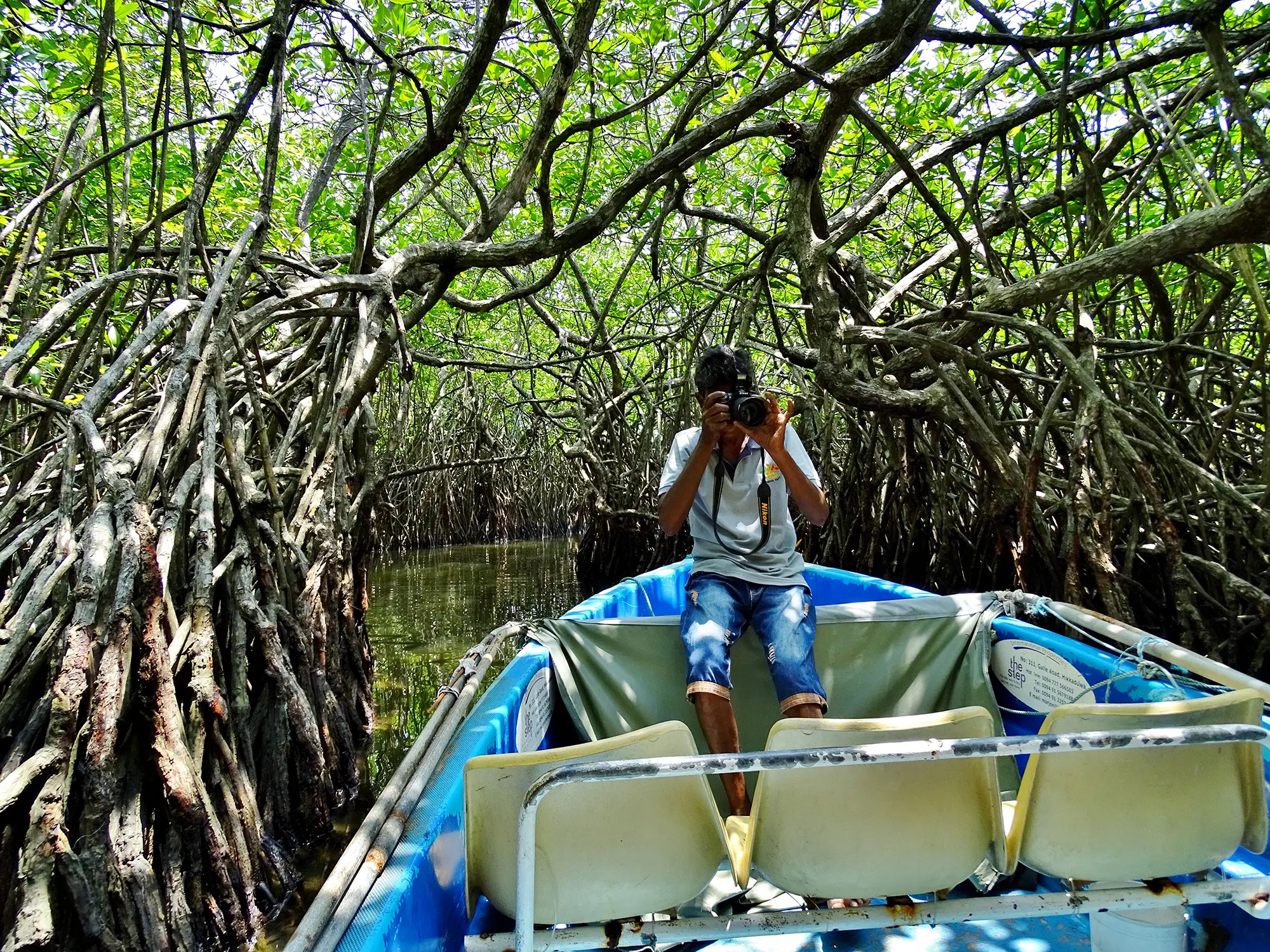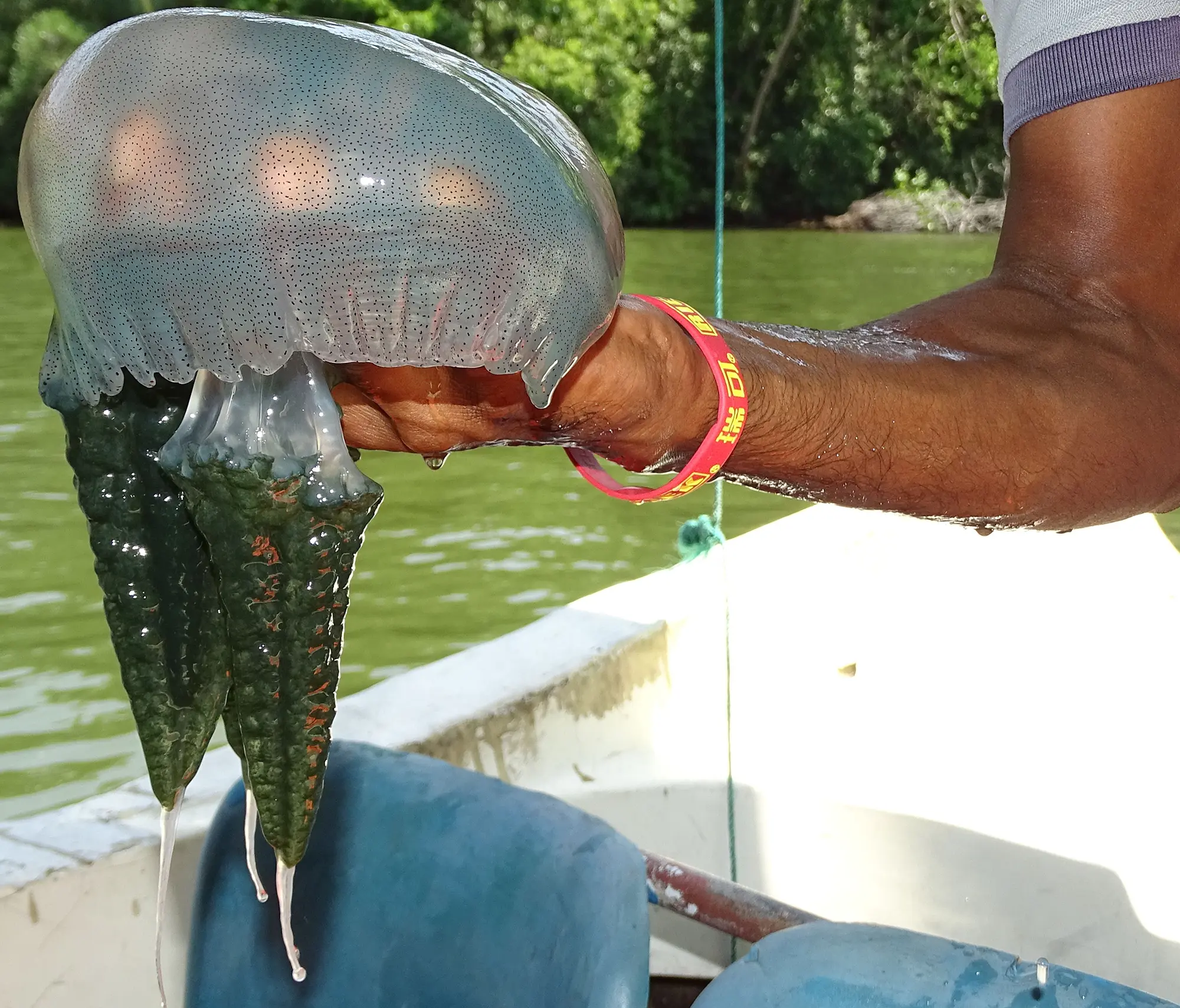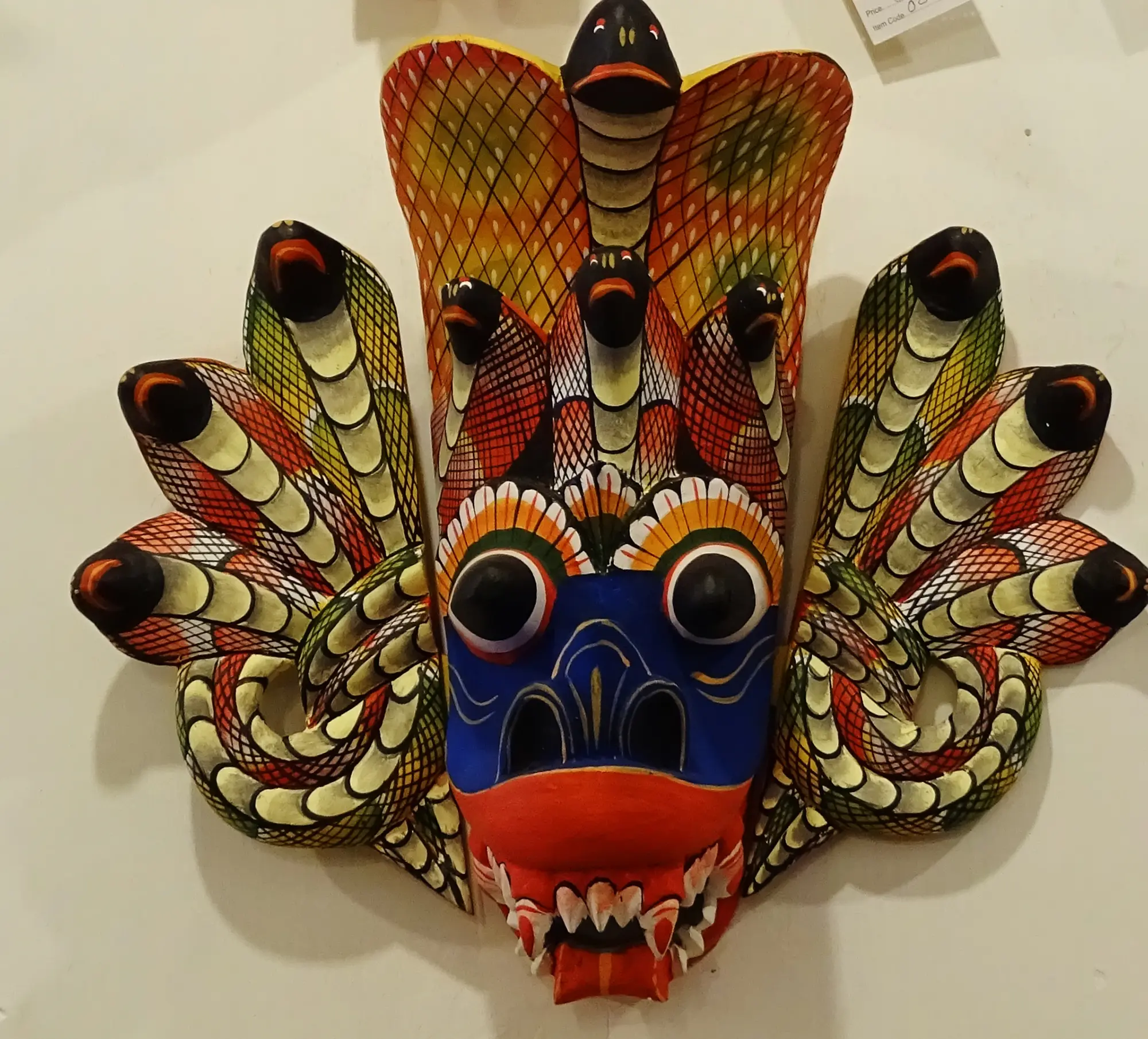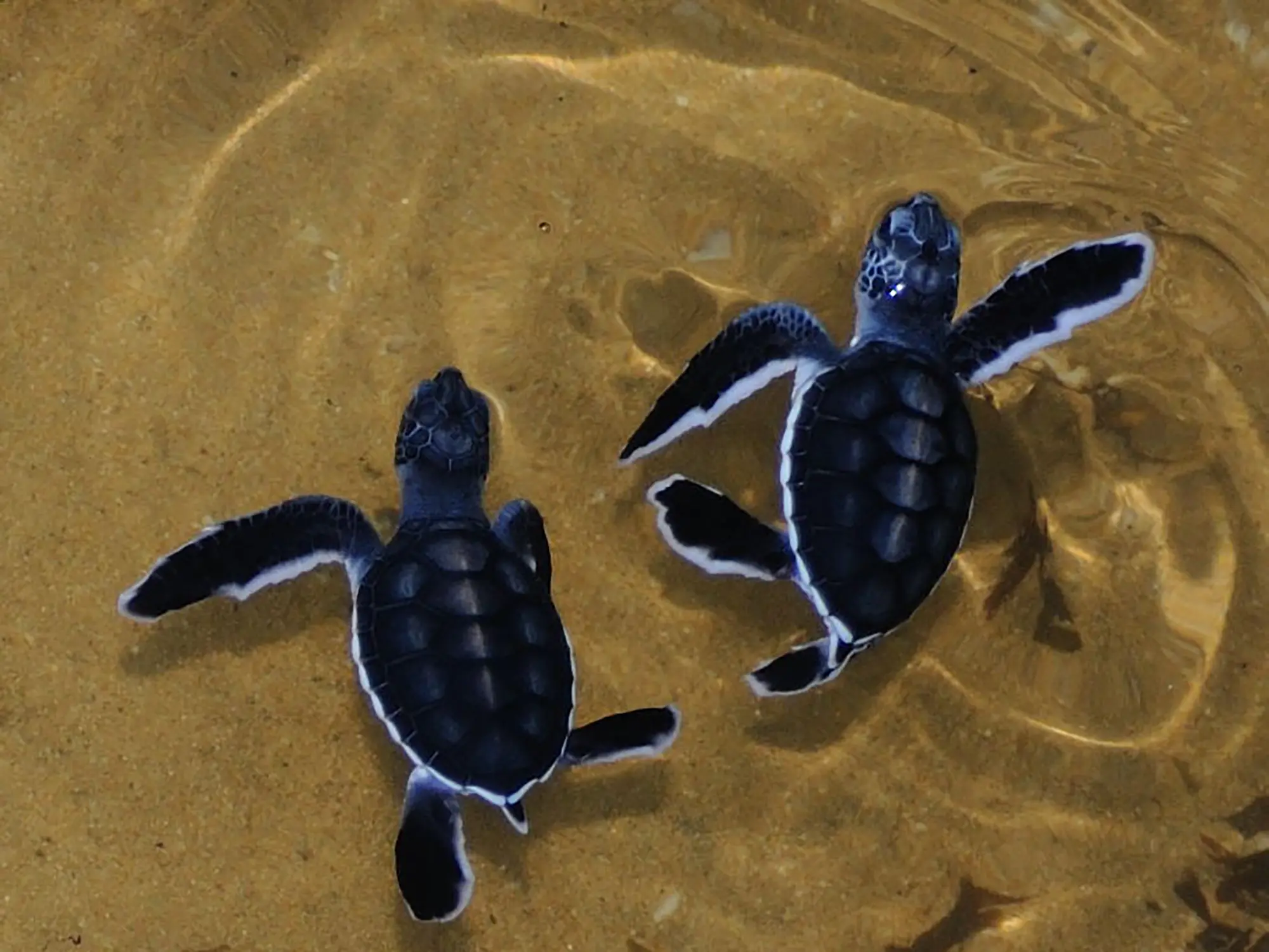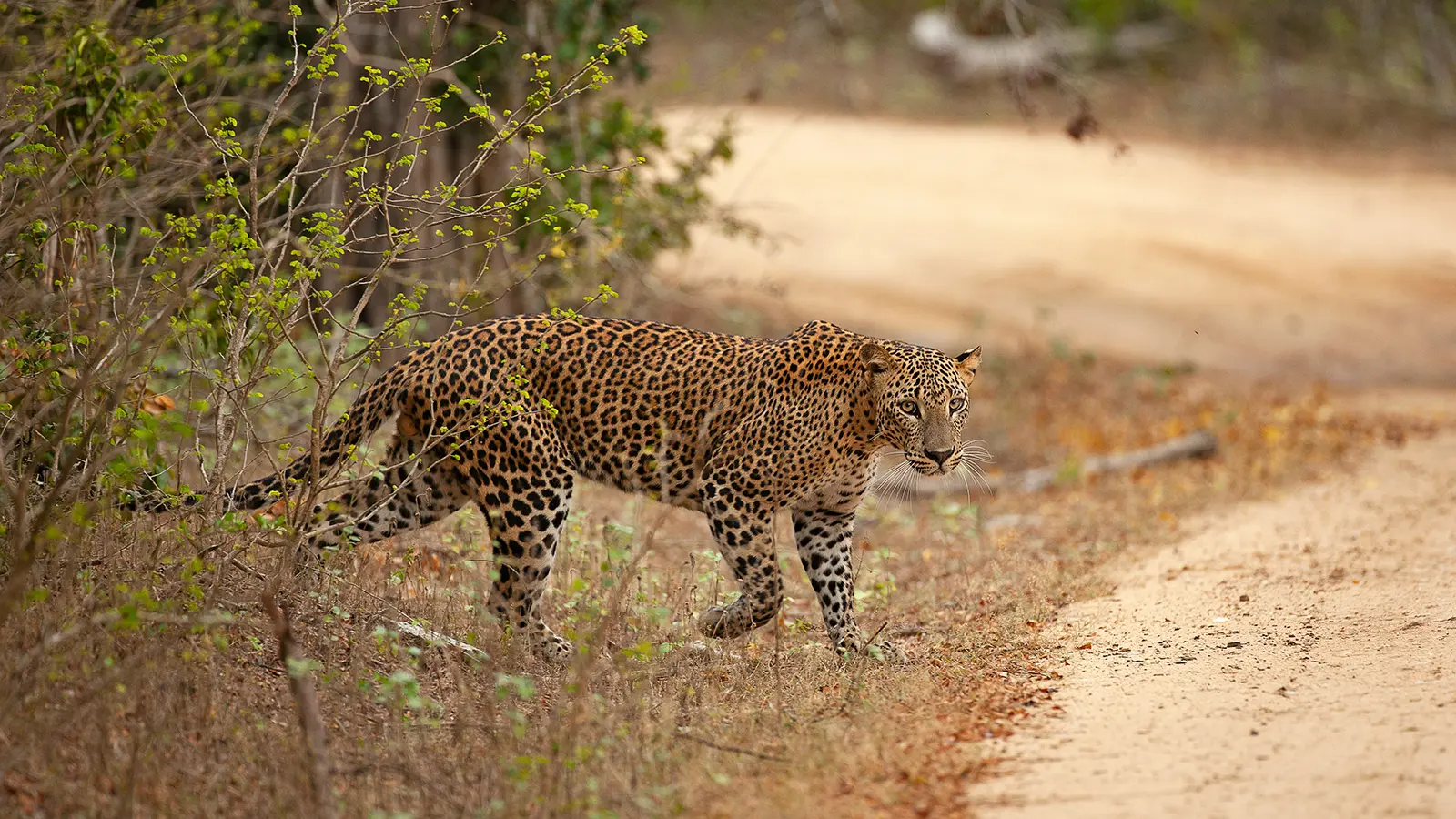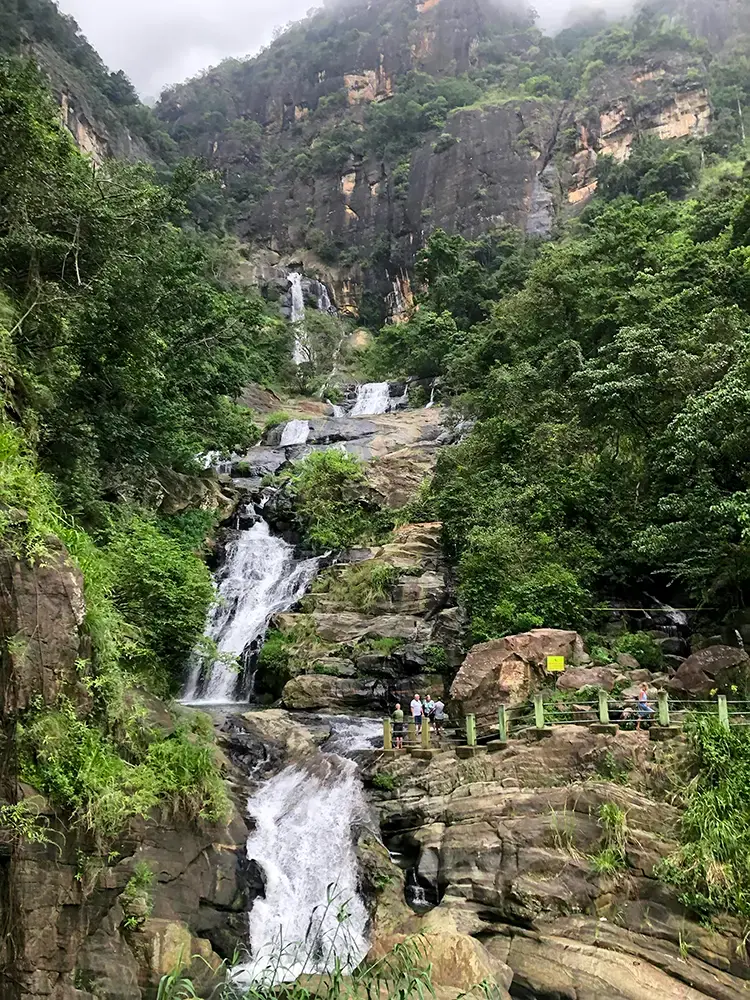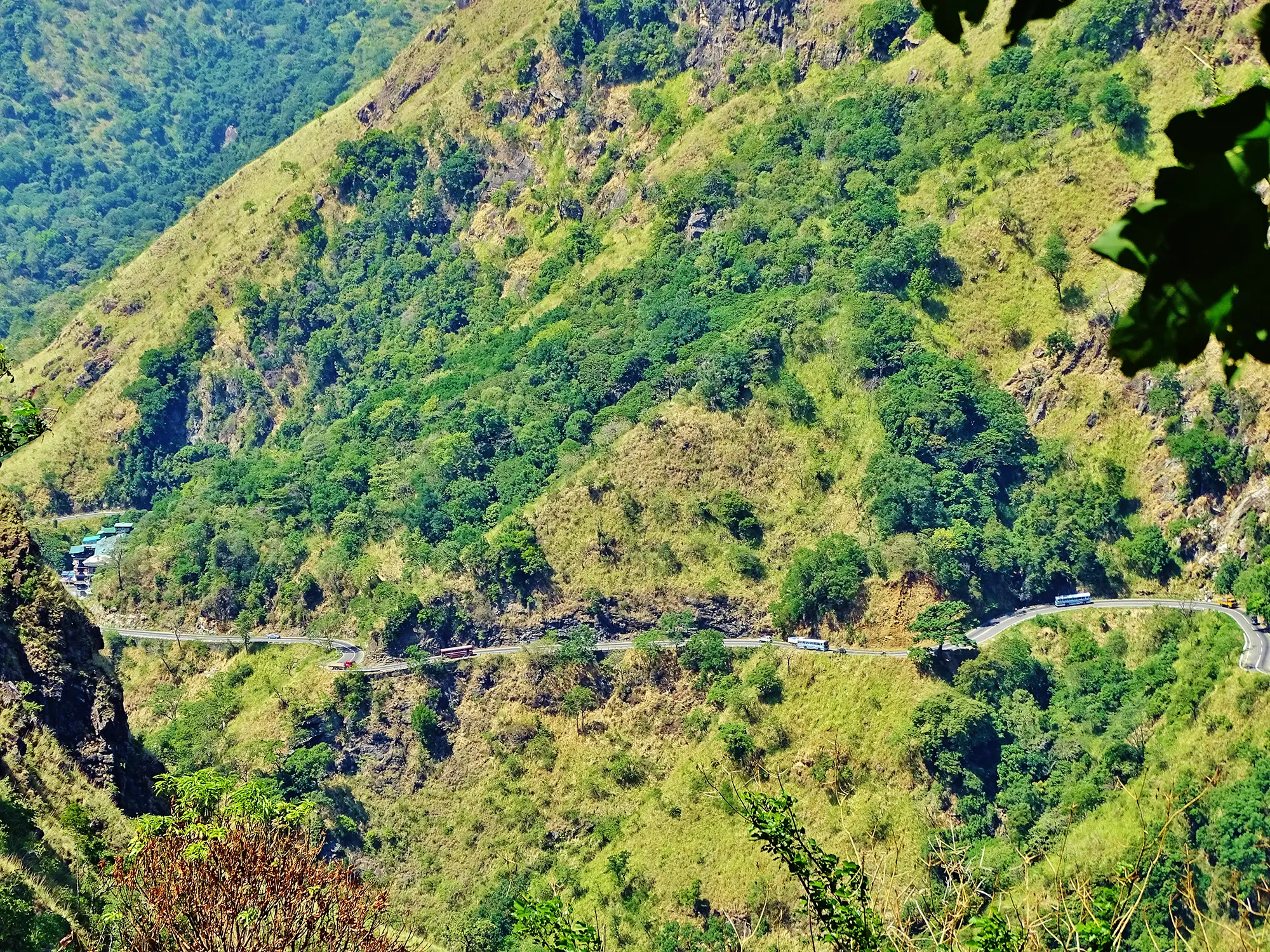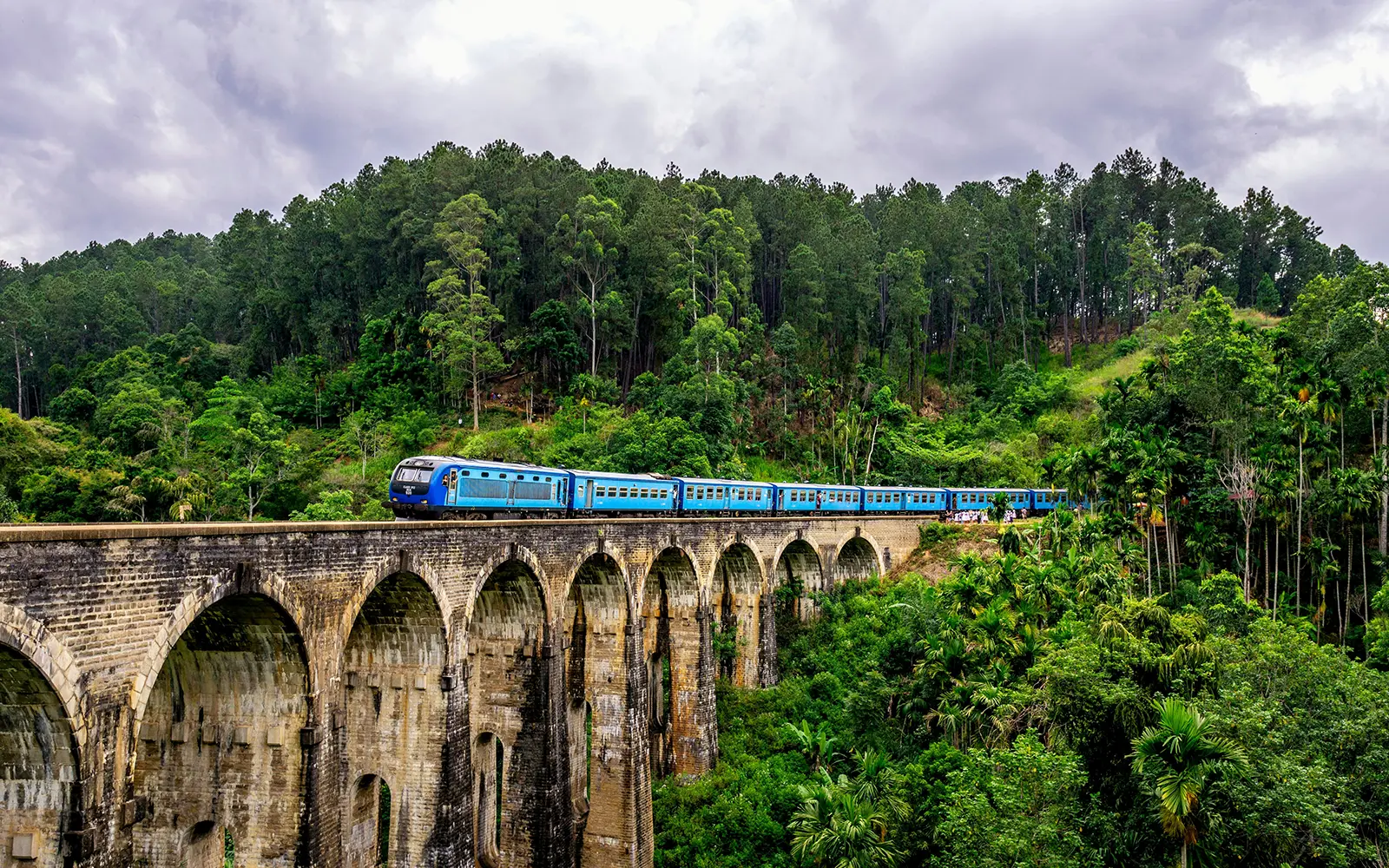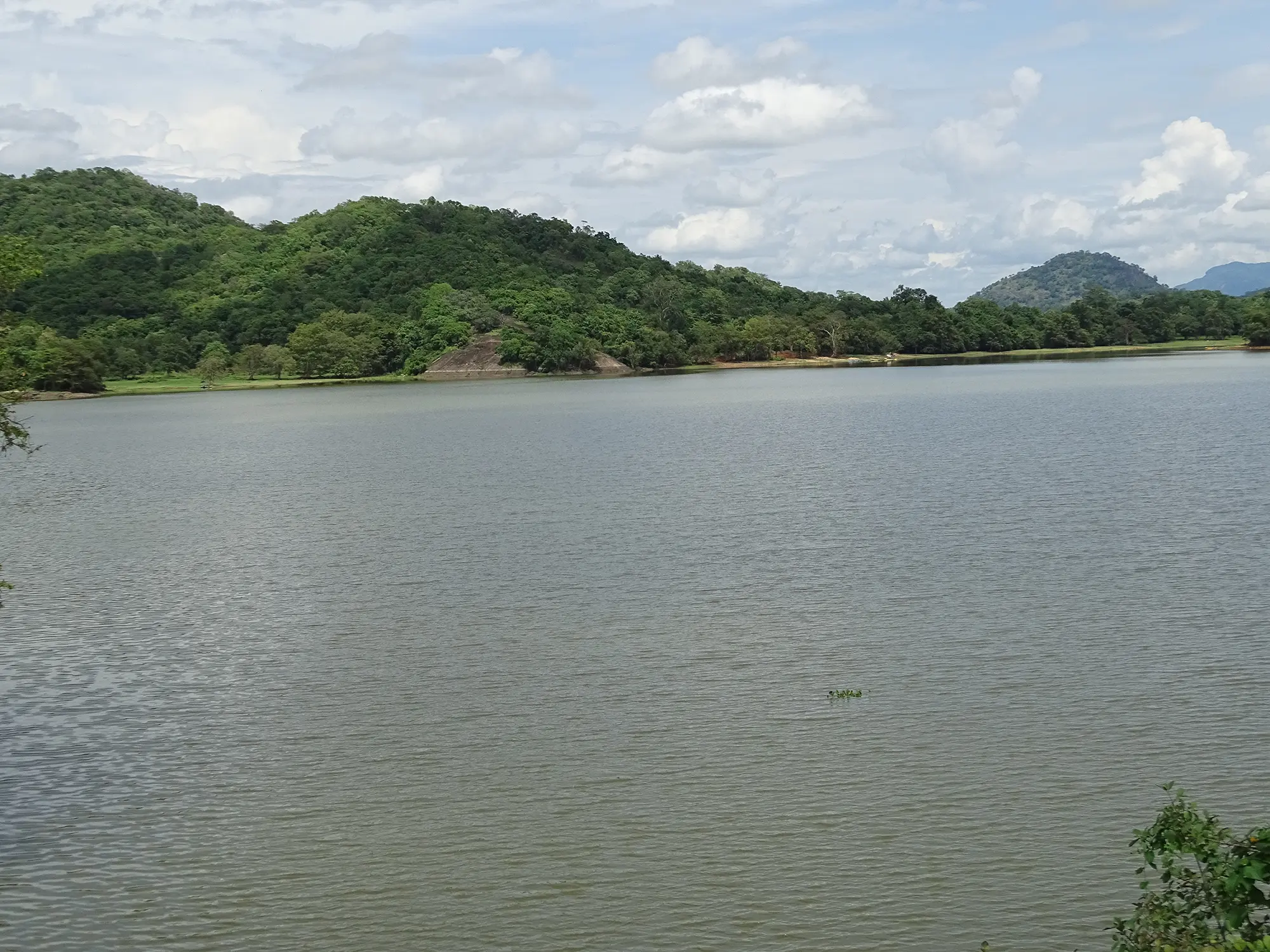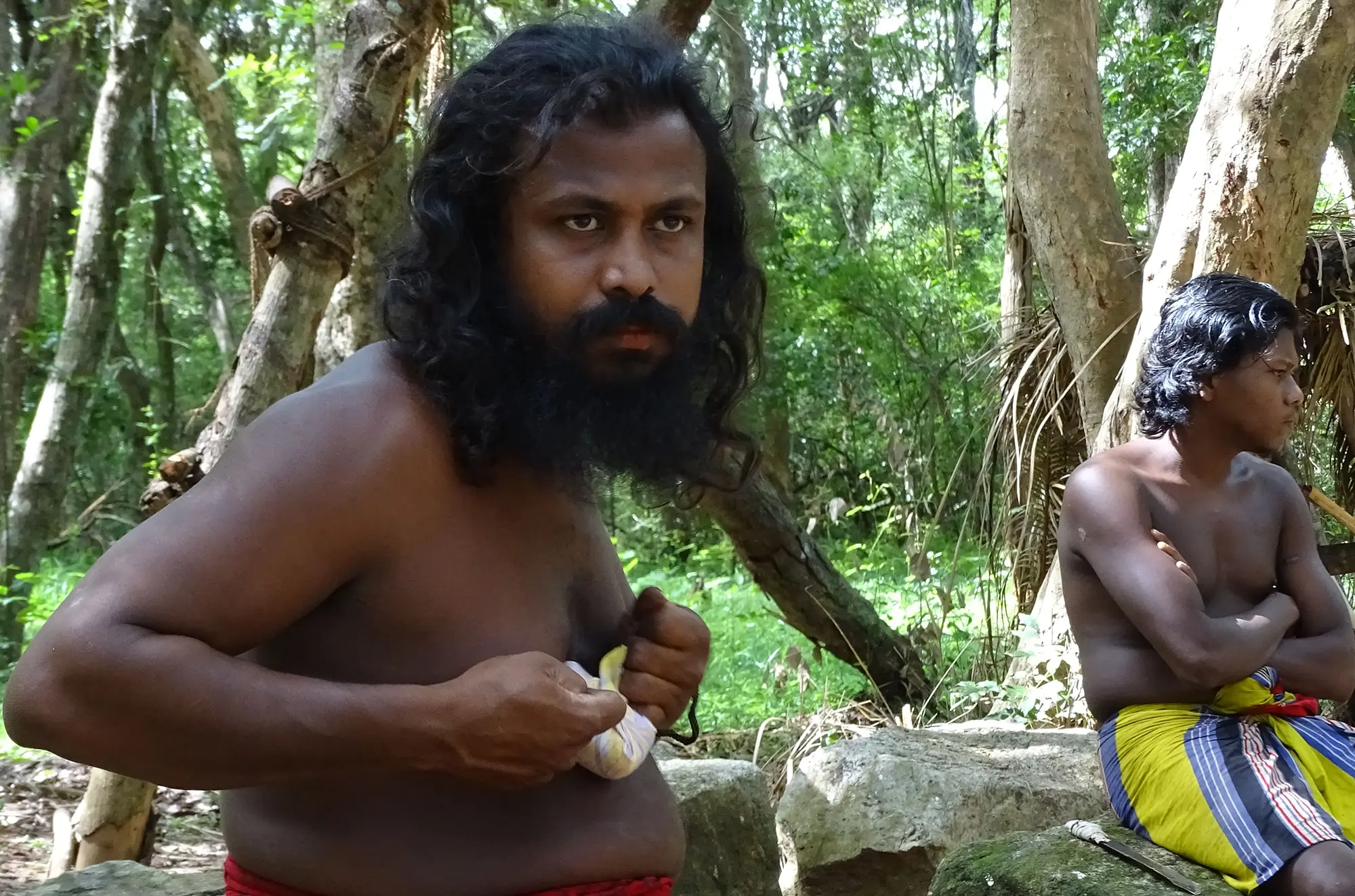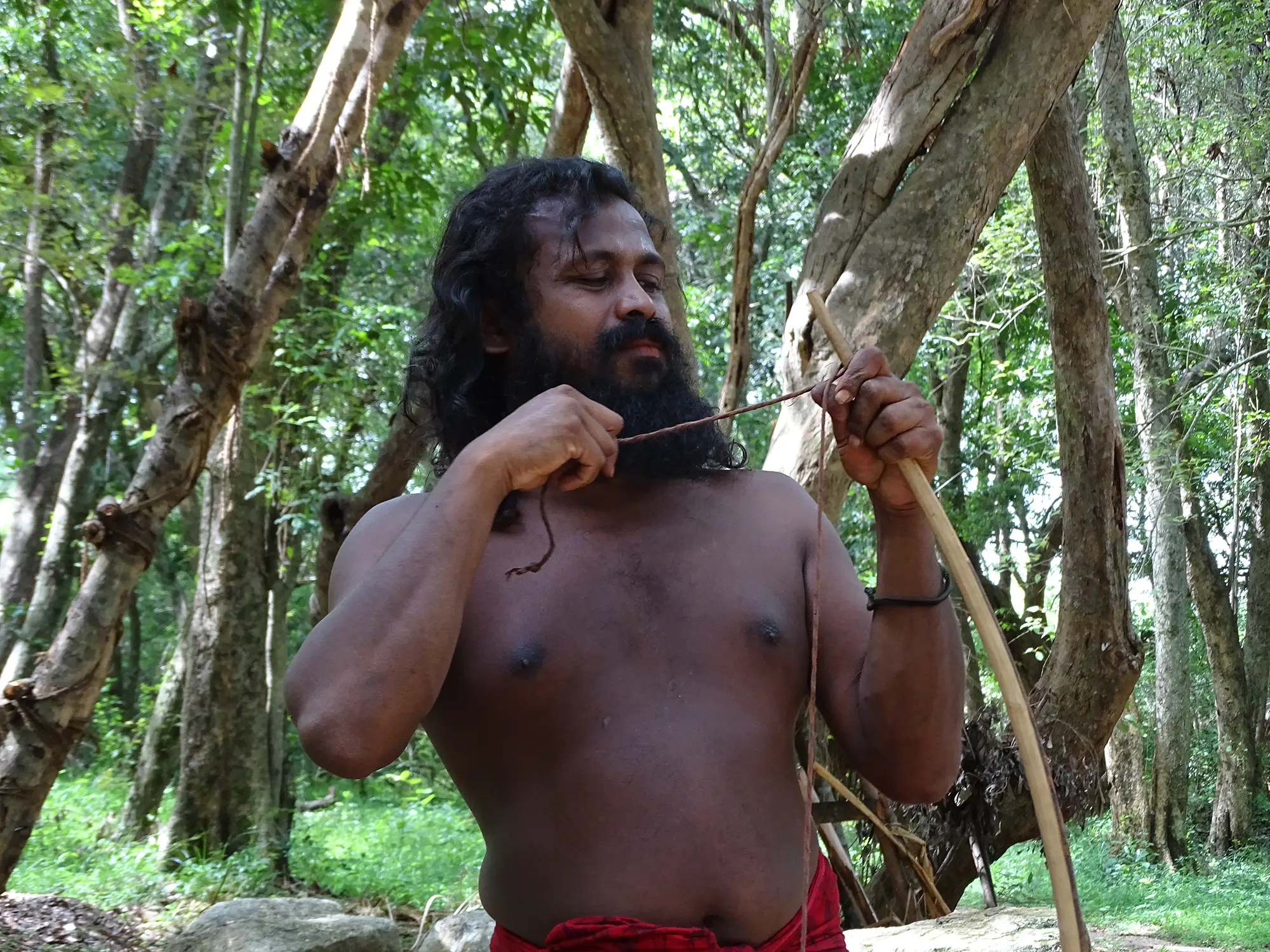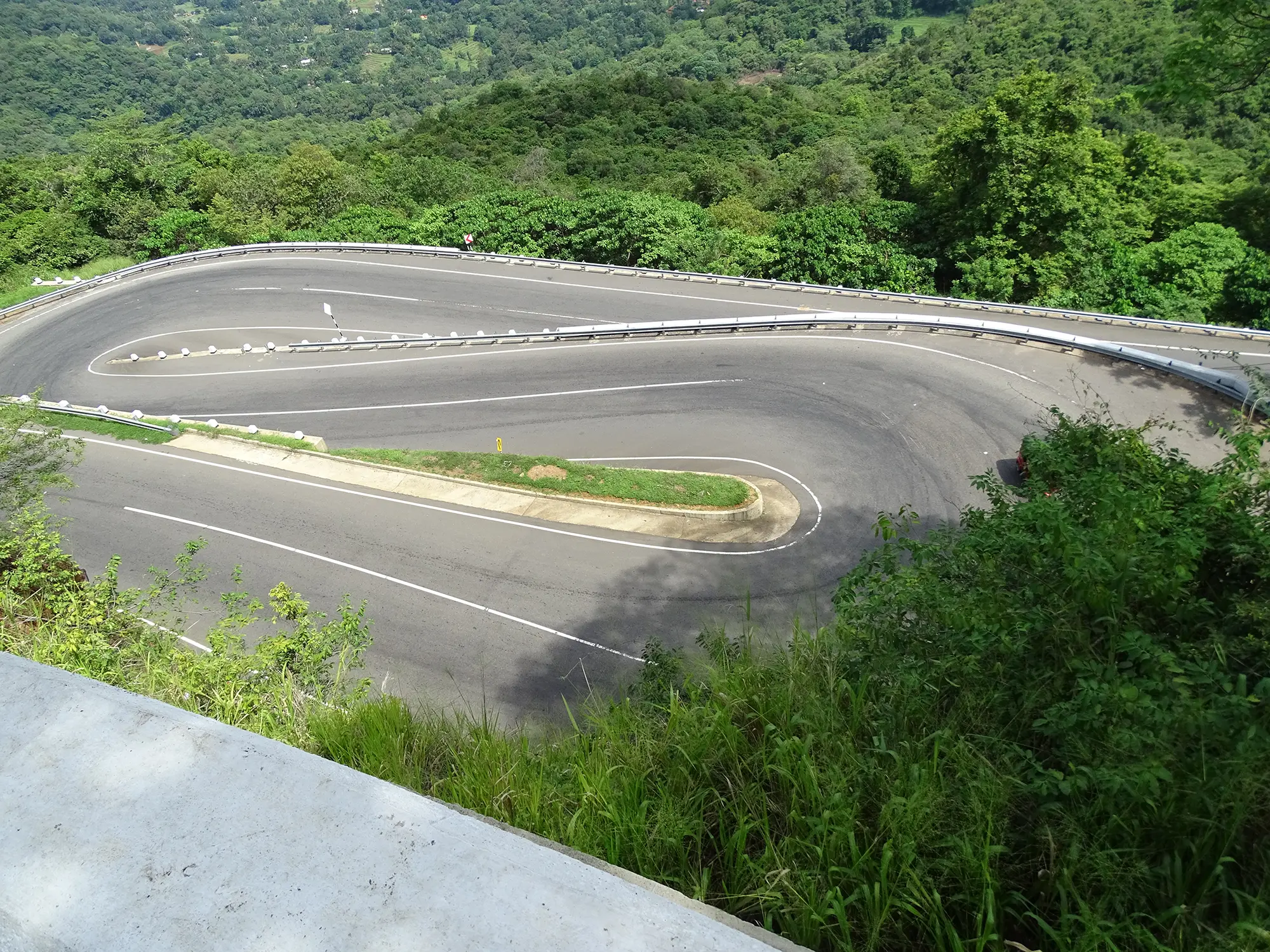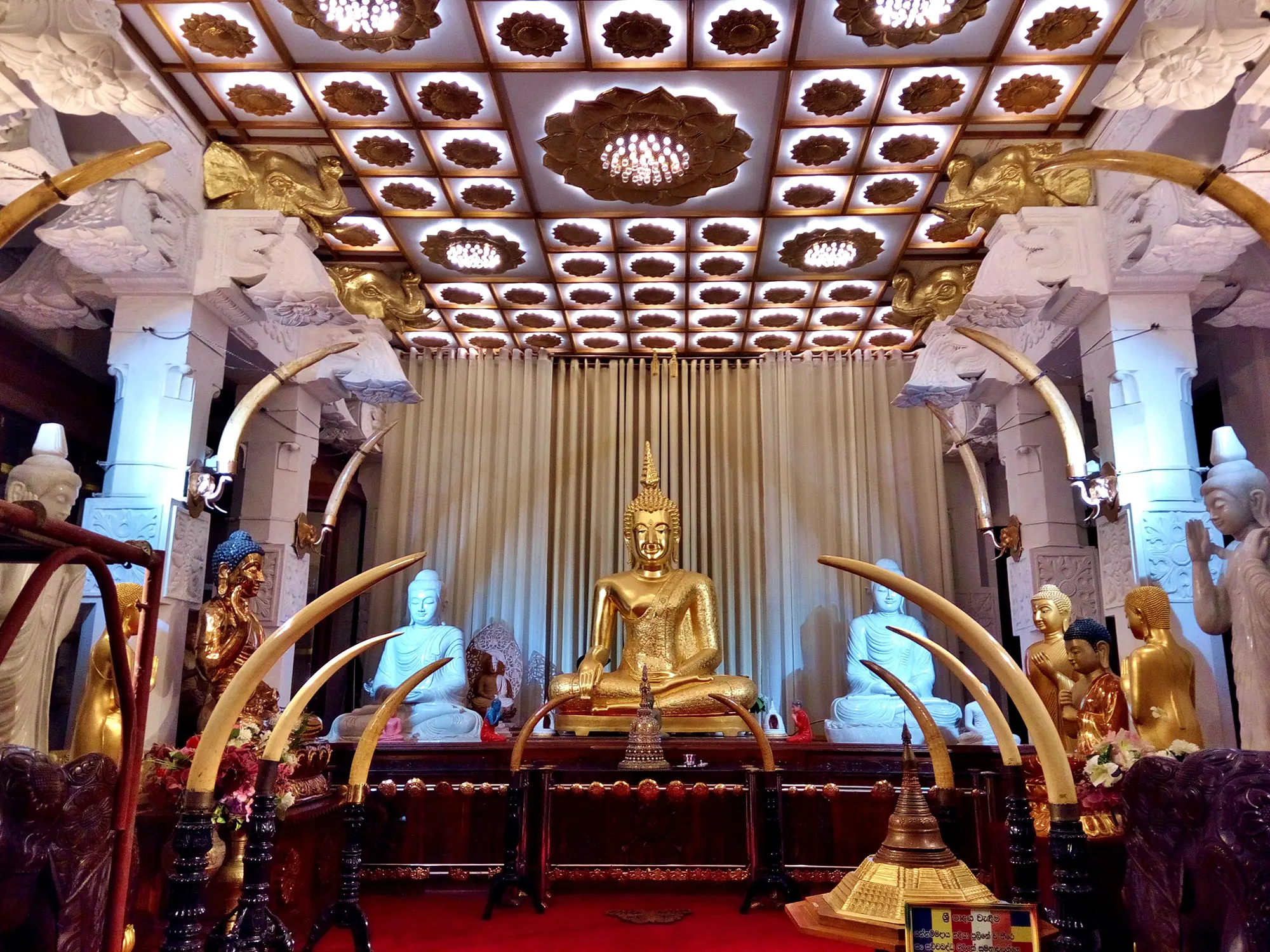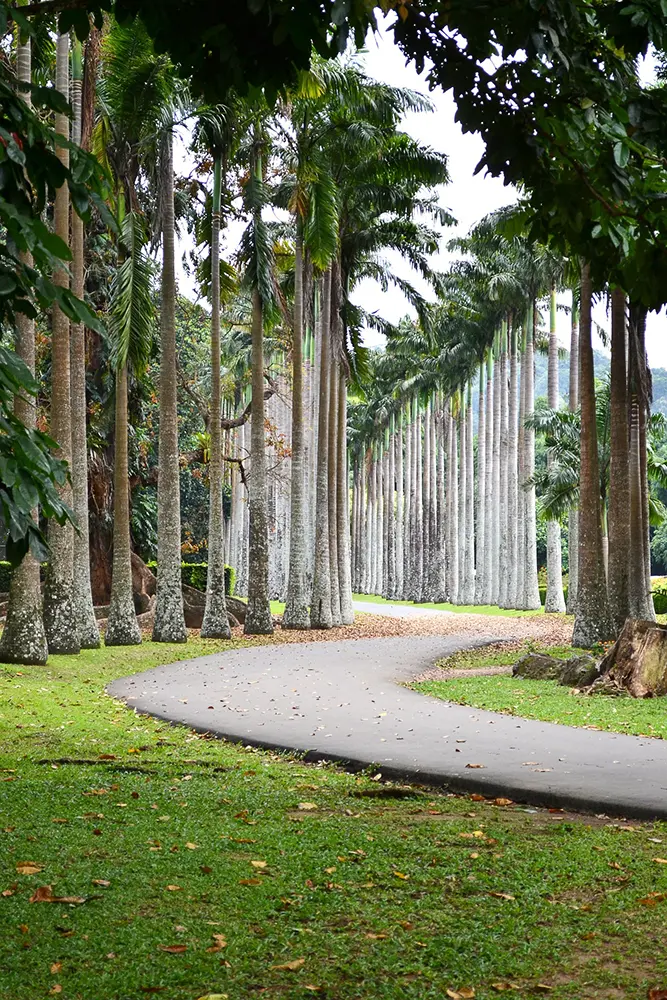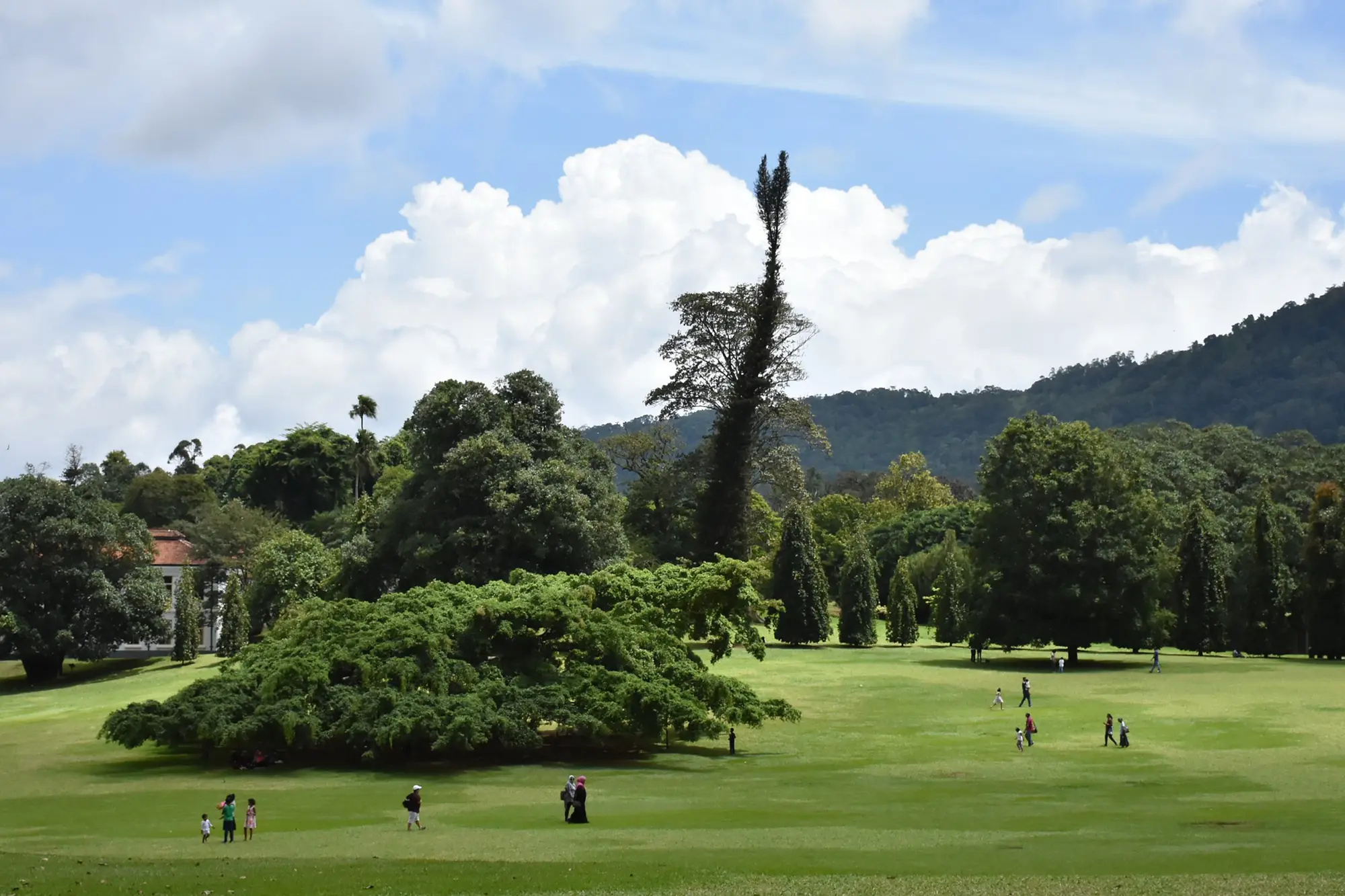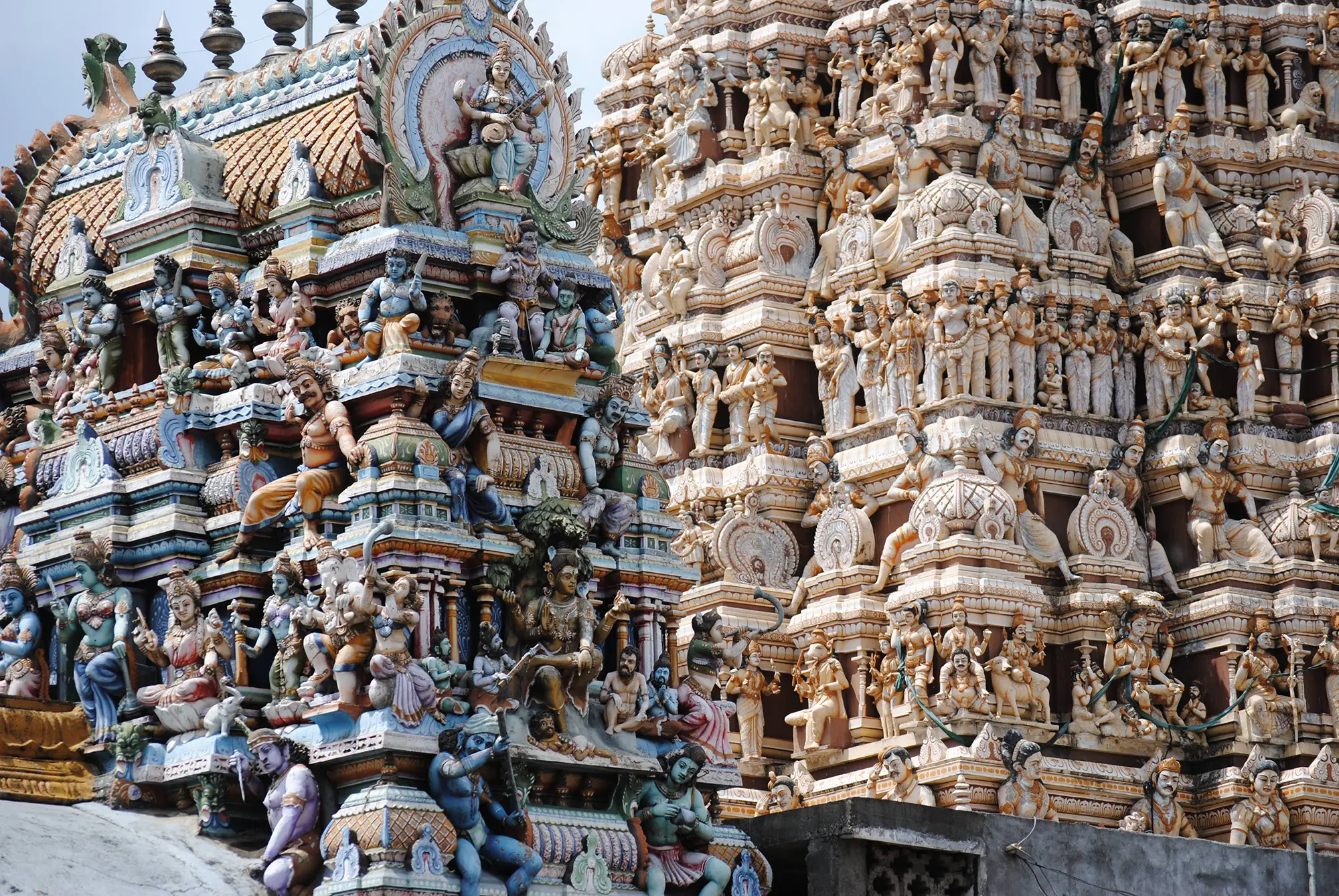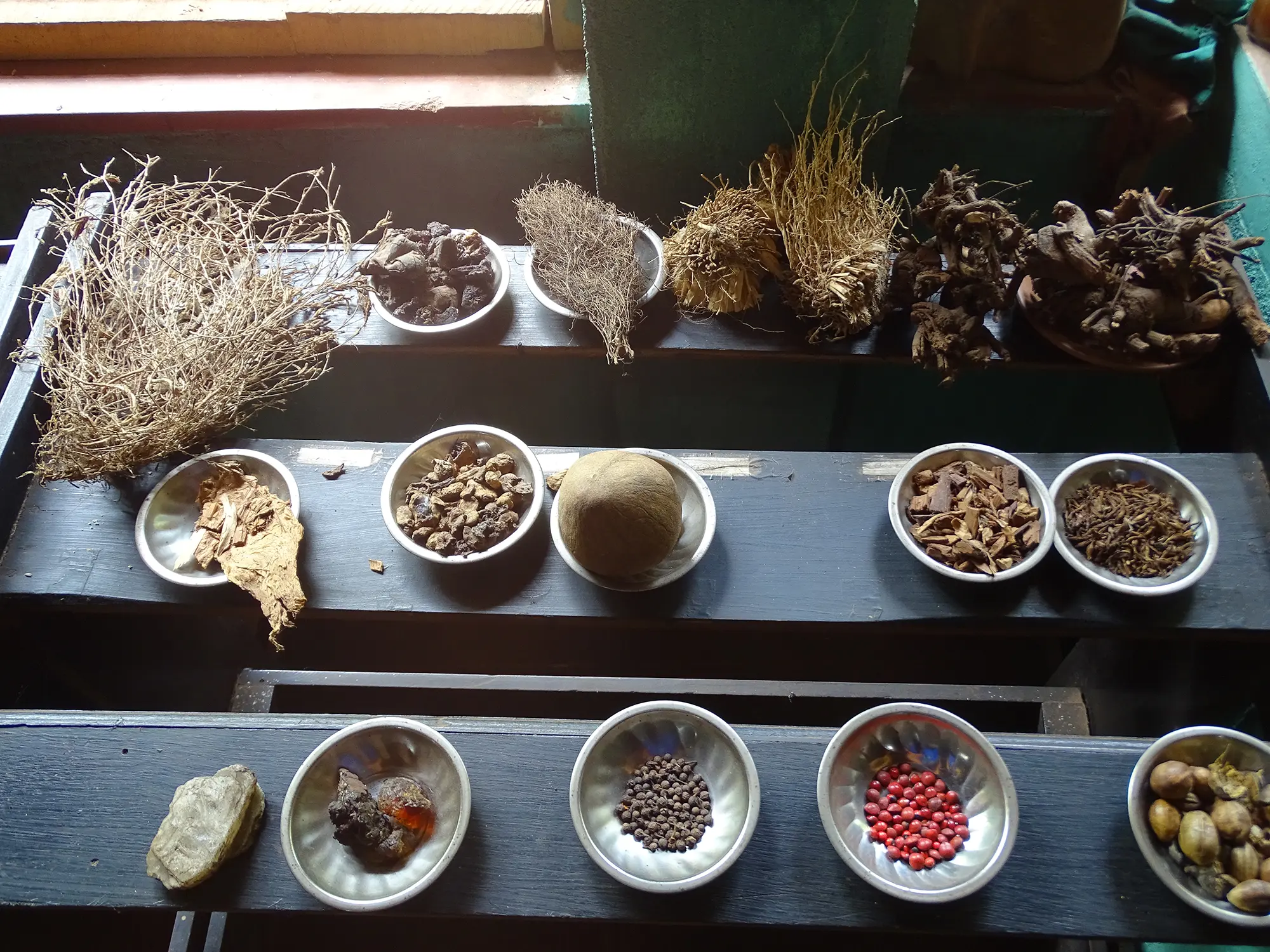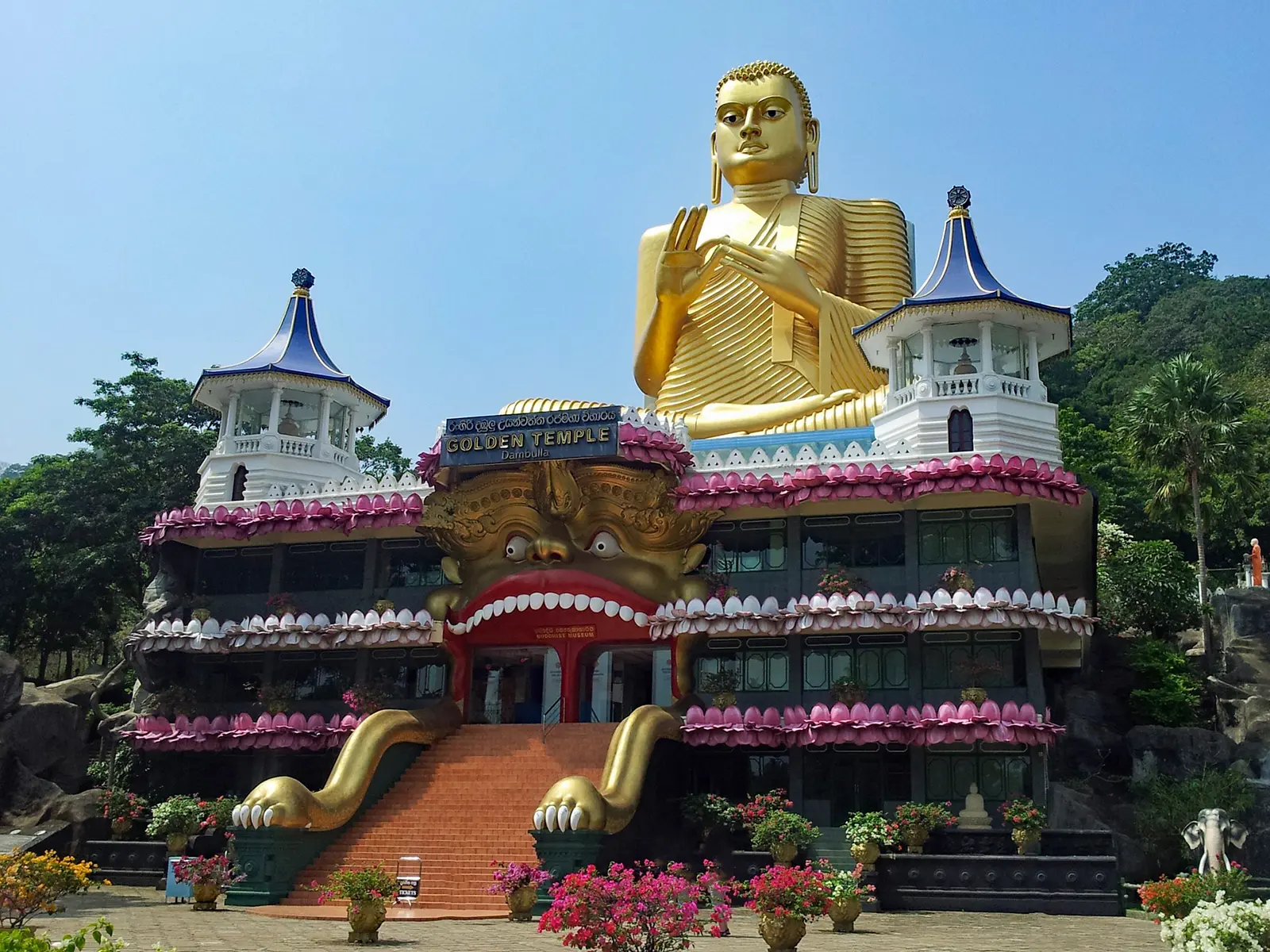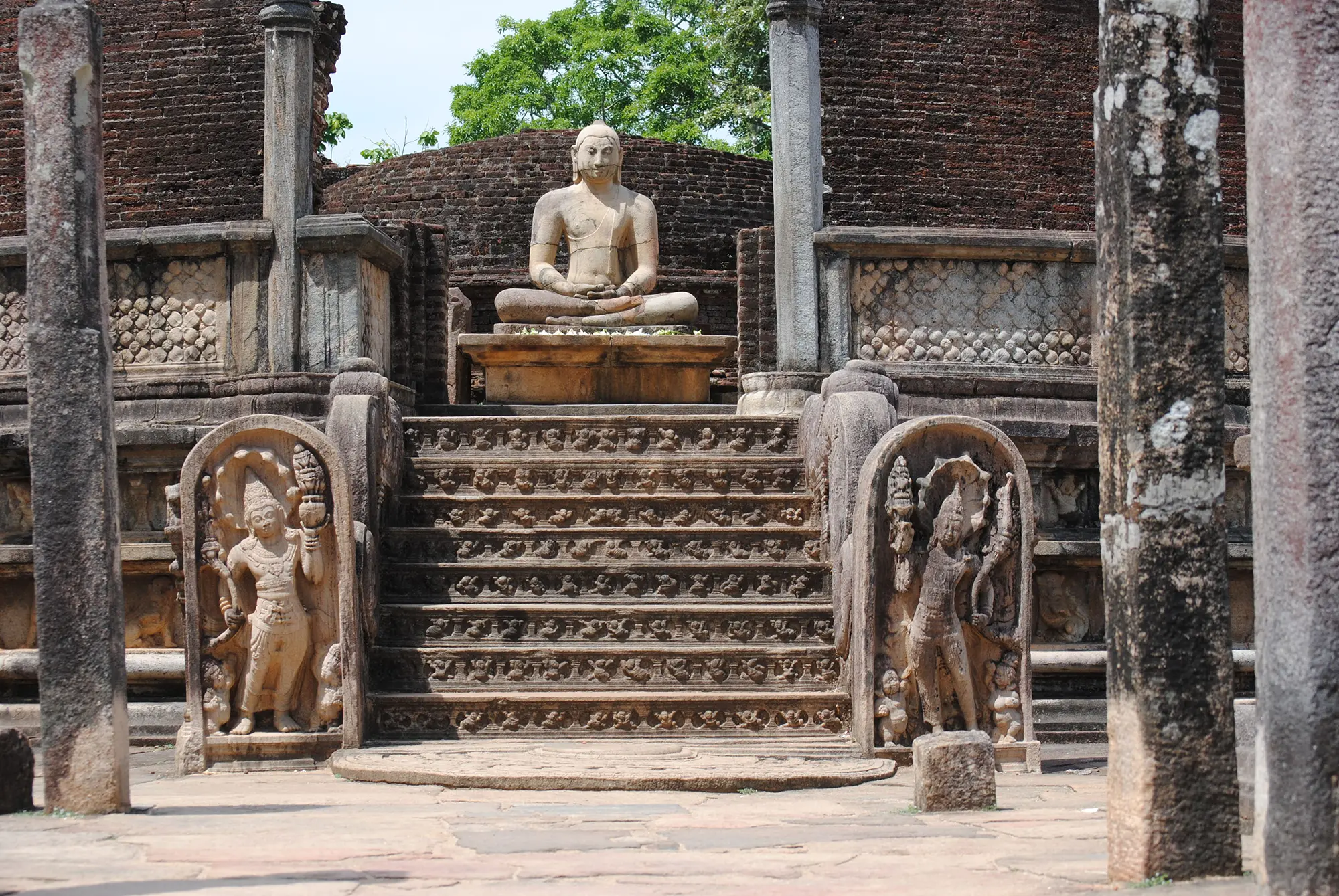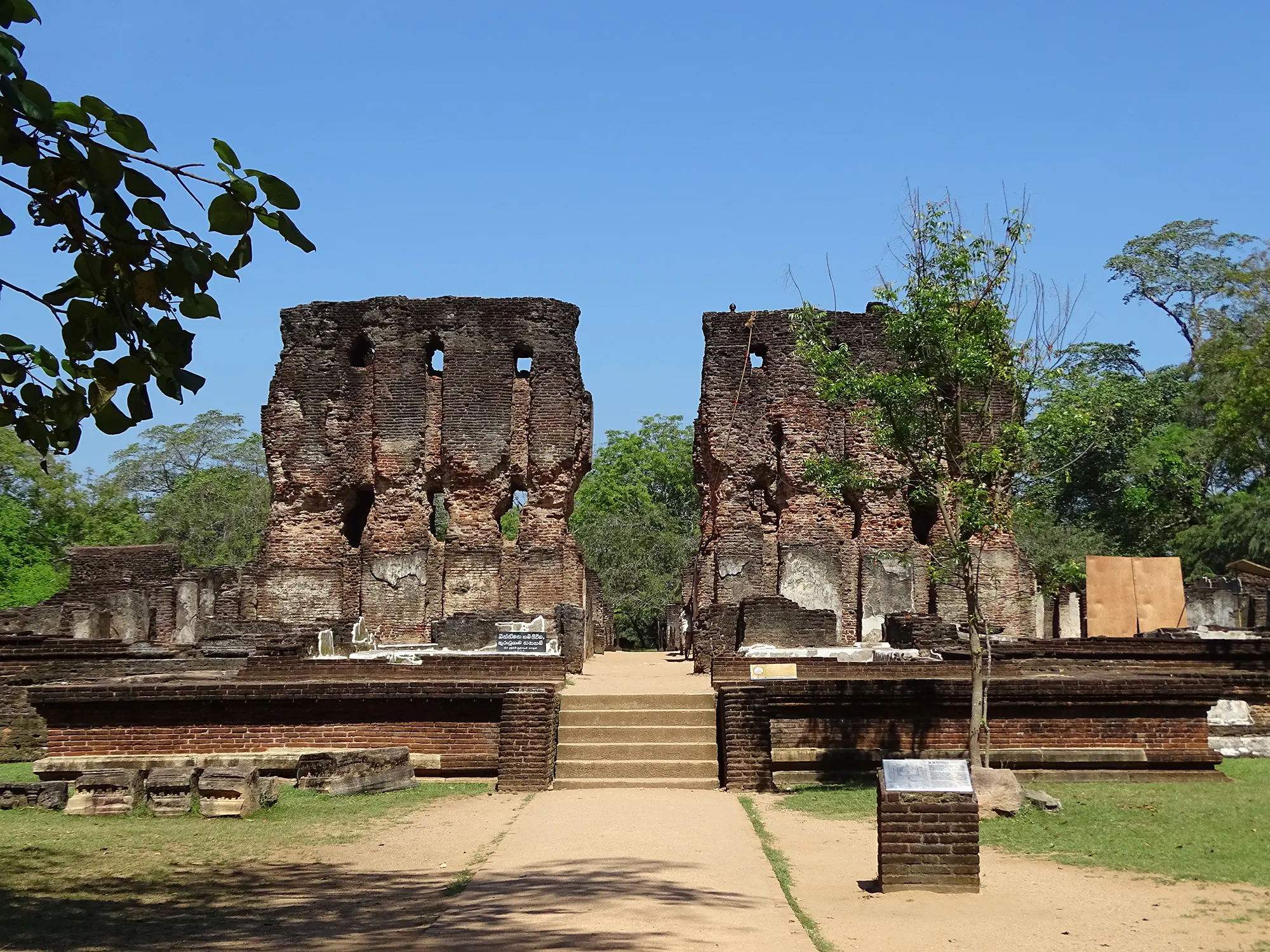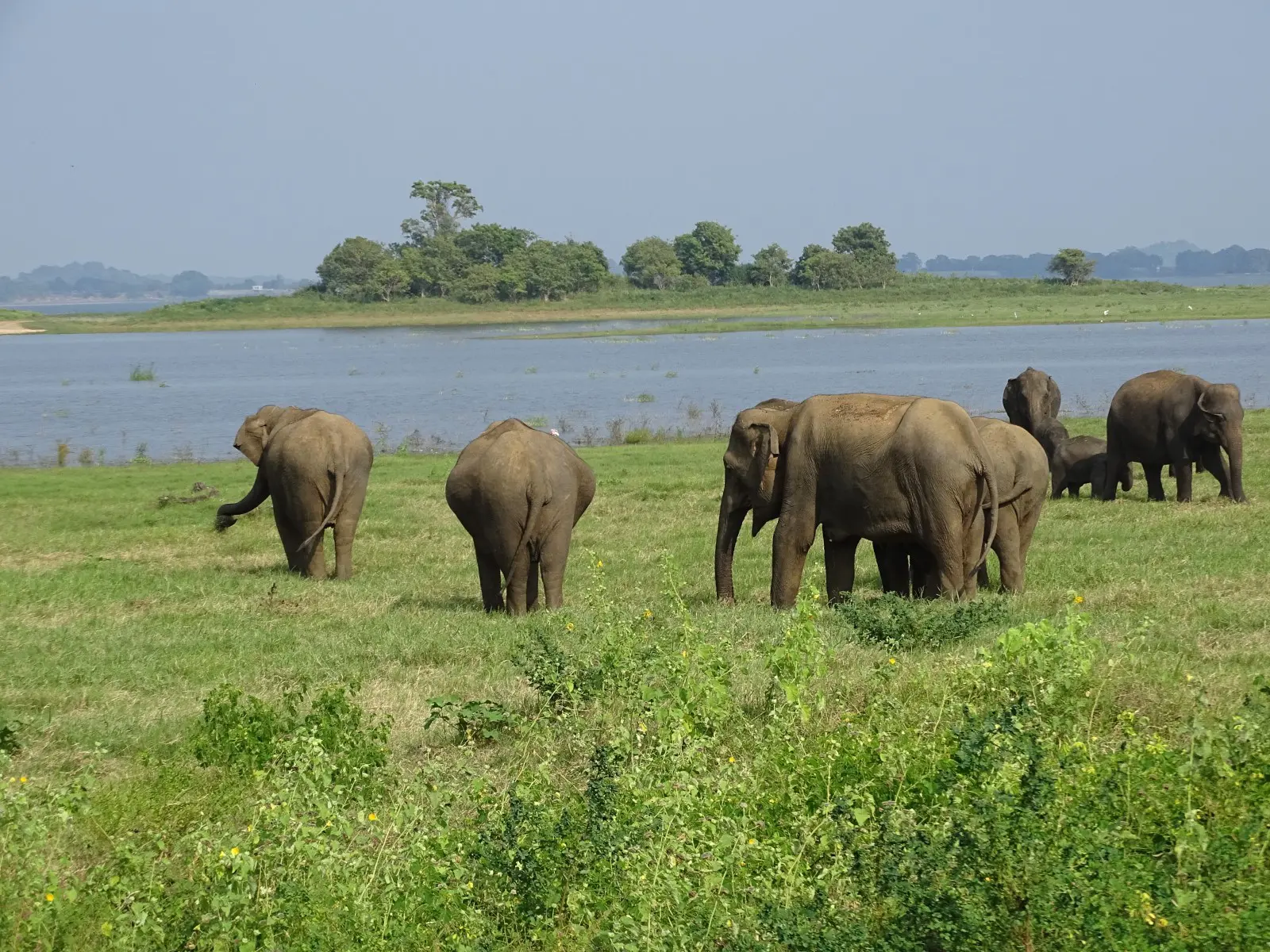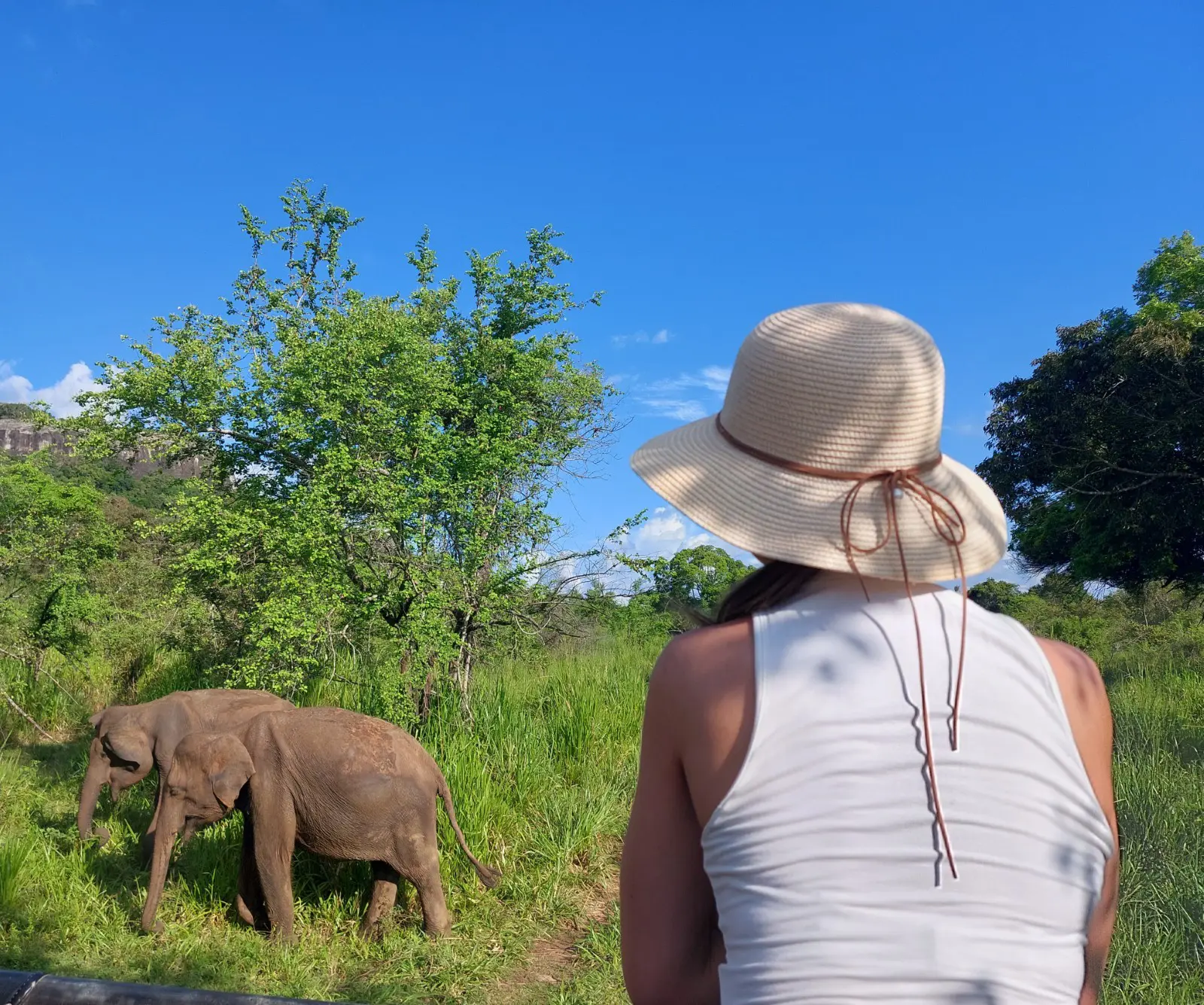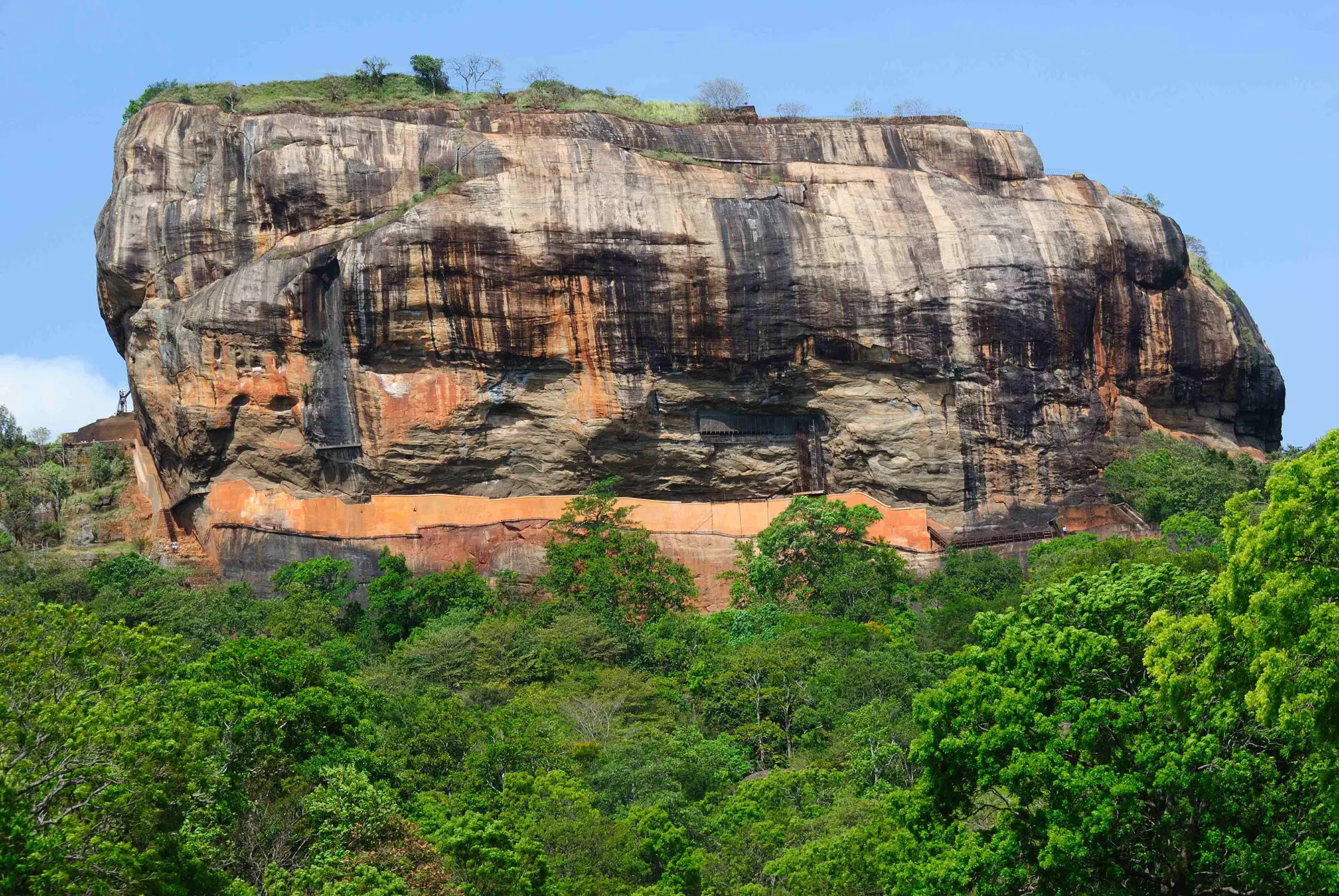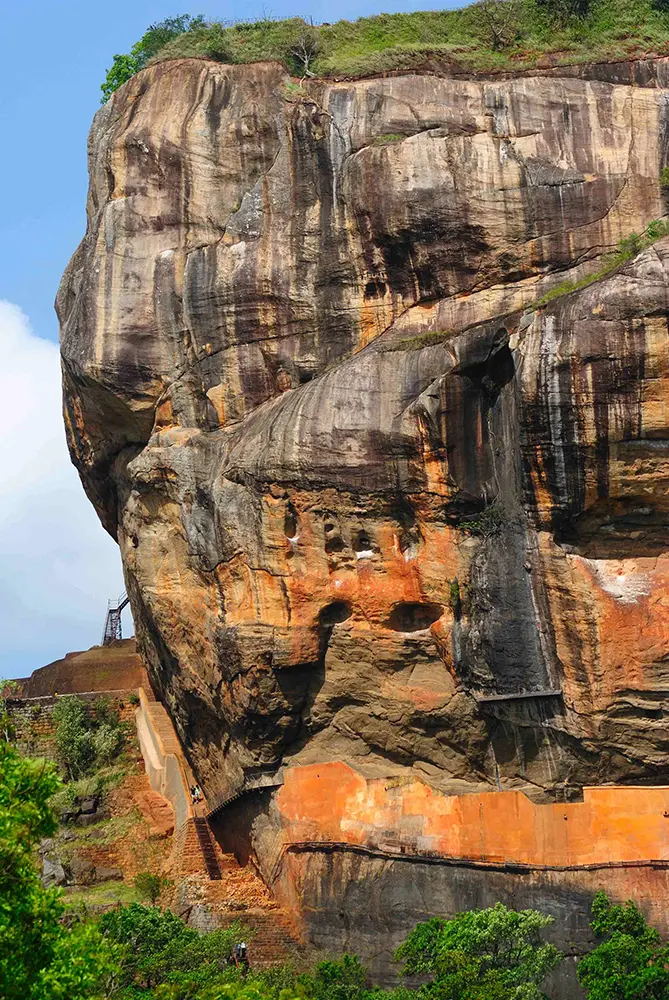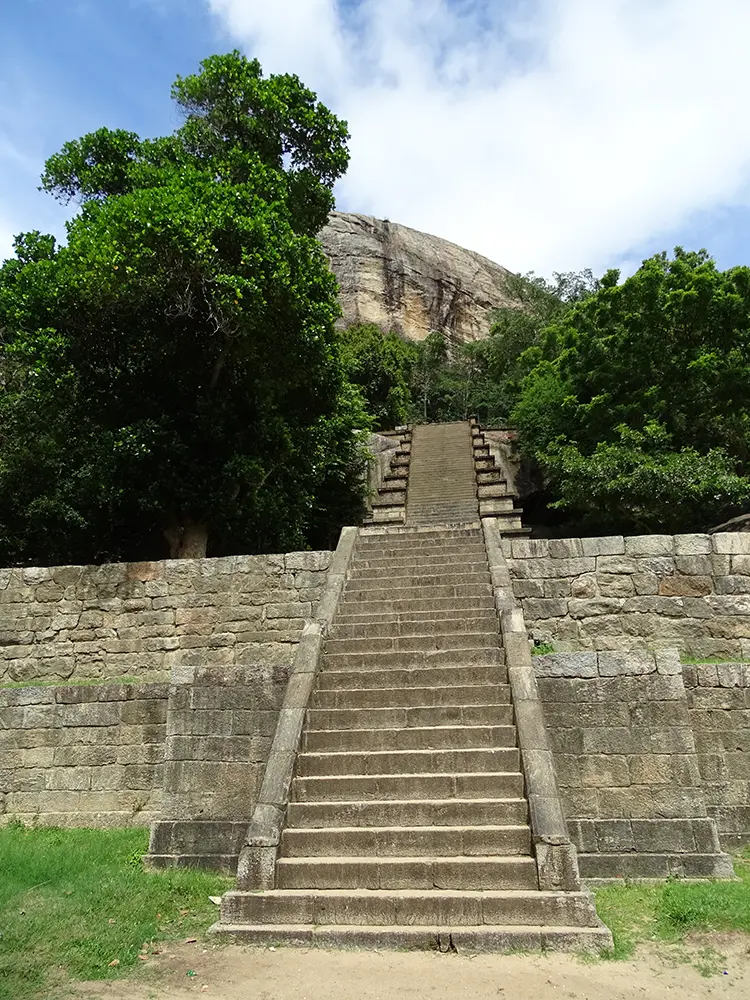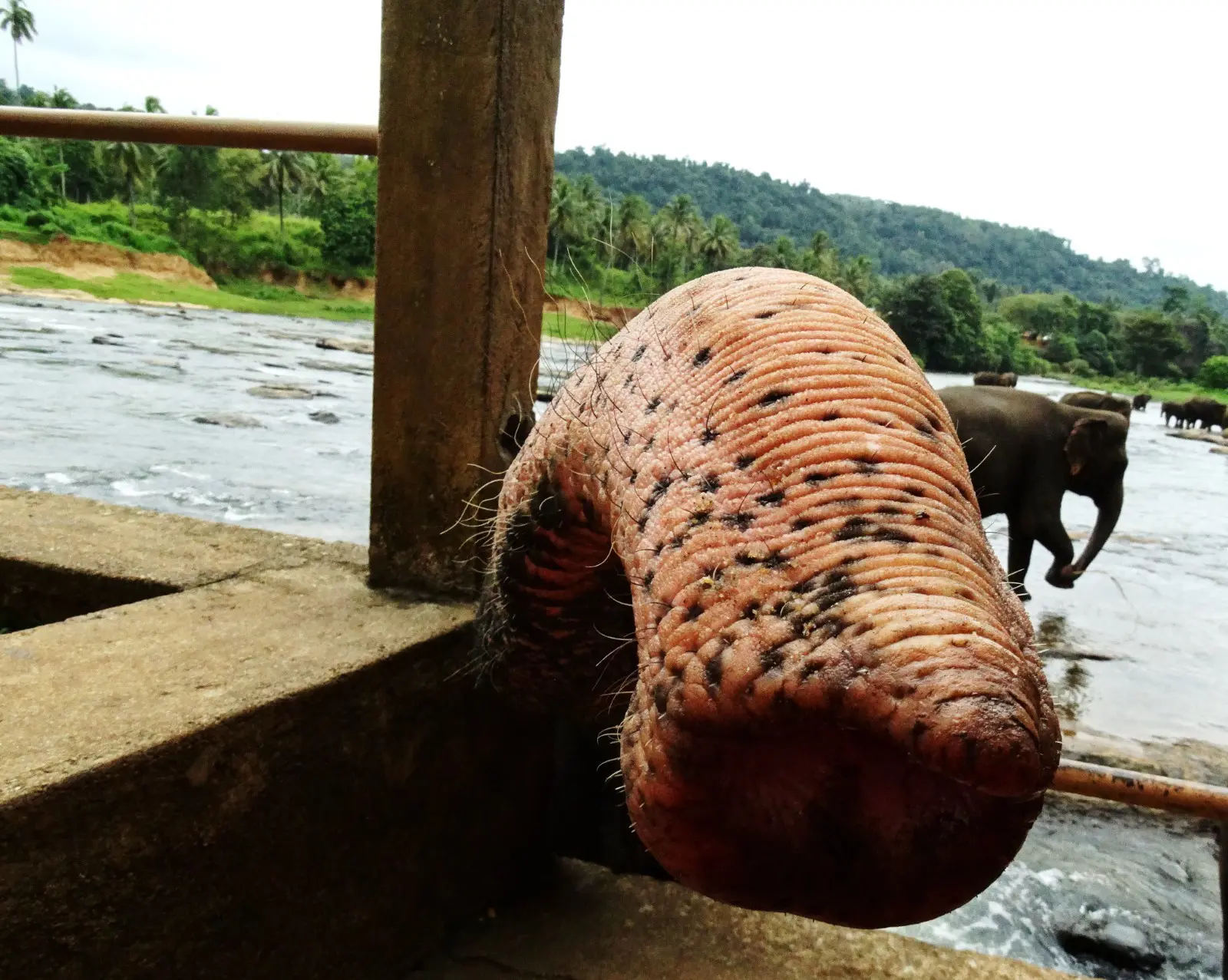09 Days / 08 Nights
Itinerary In Brief
Arrival – Mt. Lavinia
Mt. Lavinia
Madu River / Ambalangoda / Tissamaharma
Tissamaharama
Yala National Park / Ella
Ella
Mahiyangana Raja Maha Viharaya / Sorabora Wewa
Mahiyanganaya
18 Bends / Kandy Sri Dalada Maligawa / Peradenia Botanical Gardens
Kandy
Kandy / Dambulla
Dambulla
Polonnaruwa / Minneriya National Park
Dambulla
Sigiriya
Yapahuwa
Yapahuwa
Package Includes
- Service of a English Speaking Driver Guide.
- Transportation in an Air-Conditioned Car / Micro or Mini Coach – As per to the number of clients.
- Hotel Accommodation at 3* or above. HB Basis.
- All taxes.
Package Excludes
- Entrance fees to the places mentioned in the program. (Payment can be made direct at site in LKR).
- Lunch cost through-out the tour. We will assign all Sri Lankan Authentic Restaurants so that clients and pick and choose and pay directly.
- Early check-in and late check-out. (Standard check-in time 14:00hrs and check-out time 12:00hrs)
Day 1 Arrival – Mt. Lavinia
Upon arrival at Bandarnayake Airport in Katunayake, Colombo, you will be welcomed by your guide and decorated with garlands of local flowers.
From the airport we will take the participants of the expedition to Colombo, the largest city in Ceylon and the commercial capital of the island. During a panoramic tour of Colombo, we will see, among others, the monument of the Father of the Nation Don Stephen Senanayake and the Independence Square located in an exclusive district called “Cinnamon Gardens”, two monumental congress centers donated by the Chinese nation (BMICH and the Lotus Center), a city hall building that closely resembles the Capitolio in Havana, but on a smaller scale. Quite an attraction is the colorful Pettah bazaar, the only one in the country, the strange Gangaramaya temple on Lake Bera, Slave Island, Galle Face Green, i.e. the city promenade by the ocean, the very center of the city with the World Trade Center and Bank of Ceylon towers, colonial buildings, and the commercial port. , a lighthouse, Hindu temples and Christian churches as well as mosques.
After sightseeing in Colombo, we will go to a resort town located in the immediate vicinity of the metropolis – Mount Lavinia, where there is a beautiful ocean beach dotted with cafes and restaurants offering cuisines from all over the world as well as local delicacies. Dinner and overnight at a hotel in Mt. Lavinia.
Mt. Lavinia
Day 2 Madu River / Ambalangoda / Tissamaharma
A farm, or rather a project that is an incubator for five species of these aquatic reptiles and turtles, which come every year to the sandy beaches of Sri Lanka to lay eggs from which the turtles hatch after over forty days. Such farms are part of the sea turtle conservation program conducted in Sri Lanka. Not only will you be able to see various species of sea and land turtles, but you will also see day-old turtles, just hatched from eggs, being prepared to be released into the ocean.
After visiting the turtle farm, along the way we will be able to see (depending on the season) collectors of todi – nectar from coconut palm flowers, which is the main semi-finished product used in the production of arrack – local alcohol as well as coconut syrup or coconut sugar. The collectors move between the palm trees on special coconut strings – a spectacular experience.
On the way to Galle we will stop at a small port on the Madu River, from where we will start a motorboat safari on the Madu River, which has 66 islands and islets, some of which are inhabited by people. During the safari you will be able to see the everyday, simple life of the inhabitants of the Madu Delta, who mainly deal with fishing, obtaining crabs and shrimps, and catching river sand for the construction industry. A common sight is laughing children bathing in the shallow and warm waters of the river, women washing clothes on the shore, or fishermen preparing their boats for a cruise on the ocean.
A real attraction is the massage of the stupas combined with pilling on fish farms (additionally payable approx. 1 USD for 20 min). Carp-like creatures will clean your feet with precision from unnecessary skin. During the cruise, a visit to the cinnamon island is planned, where the cinnamon old lady and old man cultivate this one of the most popular spices in the world. We will see how cinnamon is extracted, and we will also learn how roofs are built from palm leaves in Sri Lanka. On special request – we will go to the island where there is a small Buddhist temple, where you will be able to look into the cells of the monks living there, see the farm buildings or try to play with the giant squirrels living in the temple area.
Another interesting attraction of the trip will be a visit to the largest mask museum in Sri Lanka in Ambalangoda.
Masks have a special meaning in Sri Lanka – they are used in ritual dances, folk medicine and also in everyday life to scare away evil or gain the favor of good spirits. Then we will go to an active moonstone mine, where you will be able to see the conditions in which precious and semi-precious stones are extracted in Sri Lanka, see collections of minerals, observe the techniques of making jewelry and possibly buy finished products or precious and semi-precious stones themselves. From the mine we will go along a picturesque road located right on the ocean shore to Hikkaduwa, a popular holiday resort, once a favorite place to spend time with hippies. On the way we will stop for a moment at the Buddha statue donated by the Japanese government in memory of the Tsunami. We will also see the monument to the victims of the Tsunami.
From Hikkaduwa we will go to Galle, where there is a 17th century port built by the Dutch and English (it is on the UNESCO World Heritage List). On this day, we plan to visit the defensive walls, bastions, but above all, look at the atmosphere of this most cosmopolitan part of the island and the colonial architecture.
Tissamaharama
Day 3 Yala National Park / Ella
Departure early in the morning before breakfast from the hotel. In the park we move in 4WD vehicles, safari in the Yala National Park (Ruhunu National Park). In Yala you can see wild elephants, wild boars, roe deer, deer, monkeys (macaques and langurs – a type of monkey from the family of monkeys from the family of monkeys), hares, peacocks, storks, Indian storks, herons, bee-eaters, eagles, kingfishers, parrots, hornbills, pythons, cobras, saltwater and mud crocodiles, slender loris, wrasses, jackals, foxes, owls, striped and land lizards, parrots, green pigeons, water buffaloes, but the main attraction are leopards, which can usually be seen before sunset or early in the morning. In the park we move in an open 4WD car (usually a simple jeep) with a driver. The safari lasts about 3 hours and ends around 9:30 a.m. Return to the hotel, a short refreshment and we move on.
Ravana Waterfalls.
Ravana Falls. These are some of the highest on the island. This is the place where the demon Ravana held Sita, the wife of Ayodhya, captive. Around the falls, a lot of local tourists and foreigners usually gather. A group bath in the cascades of the waterfall is possible.
Little Mount Adam
Little Adam’s Peak (Punchi Sri Pada). The mountain owes its name to its similarity to Adam’s Mountain, where pilgrimages take place every year to the place where the giant left his imprint. Each religion assigns a footprint to its idols – Christians and Muslims believe that Adam or Saint. Thomas, while Buddhists are sure that it is the Buddha’s footprint, while Hindus claim that the print was made by Shiva. The ascent and descent will not take more than an hour to an hour and a half.
Ella
Day 4 Mahiyangana Raja Maha Viharaya / Sorabora Wewa
Morning visit to Mahiyangana Raja Maha Vihara, an ancient Buddhist temple, site of Buddha’s visit. One of the so-called “Solosmasthana”, 16 sacred, religious places in Ceylon.
That day we will also have a swim and a catamaran cruise on Sorabora Wewa, one of thousands of artificial reservoirs built by Sri Lankan kings in the 3rd century BC. There is also a stone sluice here, unique in the country, which supplies water to nearby farmlands.
After a morning bath, we will go to a meeting with the Veddas and the head of the local Aborigines’ village. They will show us how they make fire without using matches, how they hunt lizards and how they hunt deer. You will be able to learn how to shoot arrows at targets, as well as learn about interesting rituals related to life in the jungle. There is a friendly atmosphere in the village, although the Weddas avoid showing their women.
Mahiyangana Raja Maha Vihara, an ancient Buddhist temple in Mahiyangana, Sri Lanka. It is considered the site of Gautama Buddha’s first visit to the island and is one of the Solosmasthana, of the 16 sacred religious sites in Sri Lanka. Nowadays, the temple is also significant due to its archaeological significance.
Mahiyanganaya
Day 5 18 Bends / Kandy Sri Dalada Maligawa / Peradenia Botanical Gardens
We will take the famous “18 bends” serpentine with breath-taking views to Kandy, the former and last capital of Sri Lanka.
Temple of the Buddha’s Tooth Relic – Sri Dalada Maligawa.
A holy city for the Buddhist inhabitants of Sri Lanka where the Temple of the Buddha’s Tooth Relic is located. In Kandy we will visit the Buddha’s Tooth Temple – Sri Dalada Maligawa. The temple, built in the 16th century, is currently protected by a golden roof donated by the Japanese in the 1990s. Depending on the time, we will be able to participate in active offering rituals called “pudzia” or visit the facility in peace and see the mummified elephant Raja, which carried the Buddha’s Tooth during religious processions that take place to this day in Kandy, called Esala Perahera. During our visit to Kandy, we will also visit the temples of Hindu gods and goddesses located in the immediate vicinity of the Temple of the Buddha’s Tooth Relic. We will see the temples of the goddess Pattini, the god Natta and Gamidar. You will be able to observe everyday religious activities in this temple complex, the most popular among Buddhist followers on the island. Dalada Maligawa is the most important Buddhist temple on the island, built at the end of the 17th century, and is a pilgrimage center for followers of Buddhism from Sri Lanka as well as from other countries where the Teravada Buddhist doctrine is known. The multitude of temples built around the one containing the Buddha’s Tooth relic is noteworthy, as there are several Christian churches and a mosque nearby.
Peradenia – Botanical Gardens
We will visit the Royal Botanical Gardens in Peradenia. On an area of 70 ha, it was founded in the 14th century as a royal garden by the Sinhalese kings and changed to its current form of botanical gardens by the British in 1821. Over 4,000 trees grow here, including many rare species and endemics. Here we will find cannon trees, sausage candle trees, durians, spectacular simple tecomas, styftias, the largest bamboos in the world and the palms with the largest inflorescences – plumed ones. You can see coca, dart palms, exuberant crotons, the ubiquitous bougainvillea, traveler’s palms and arakonet palms. Javanese palm trees with spreading roots among which lovers spend time. The orchid garden presents the most beautiful hybrid varieties of these orchids. Many beautiful landscapes for those who love taking photos.
At the end of the day, a show of folk, theatrical, magical and healing dances combined with walking on hot coals, swallowing fire and smearing it on the naked body.
Kandy
Day 6 Kandy / Dambulla
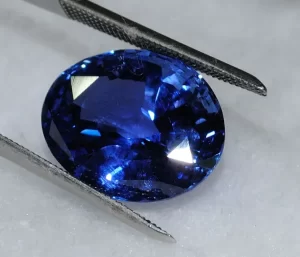 In Kandy, it is worth looking for sapphires, rubies and other gemstones. There are numerous grinding and jewelry workshops here that process stones purchased from the stone mines in Rathnapura. In Kandy, you can also visit factories producing batiks – fabrics dyed using the waxing method. Carving workshops and outlets selling branded clothing from Sri Lankan sewing factories at favorable prices are also included in the tour program.
In Kandy, it is worth looking for sapphires, rubies and other gemstones. There are numerous grinding and jewelry workshops here that process stones purchased from the stone mines in Rathnapura. In Kandy, you can also visit factories producing batiks – fabrics dyed using the waxing method. Carving workshops and outlets selling branded clothing from Sri Lankan sewing factories at favorable prices are also included in the tour program.
In Matale, if possible, we will visit an extremely colorful temple created as a result of curing the smallpox epidemic in a former transit camp for plantation workers from India.
Ayurveda – local medicine.
On the way, we will stop at Ayurvedic gardens to learn something about Ayurveda, a unique medical system still used today in India and Sri Lanka.
Ayurveda
Ayurveda came to Sri Lanka from India and currently takes the form of a science recorded in Ayurvedic scriptures. In parallel with the Ayurvedic system of medicine, a trend of folk medicine emerged in Sri Lanka. Both of them intertwine in everyday practice, often solving problems that are impossible to solve from the point of view of conventional medicine. A visit to the Ayurvedic gardens will allow you to observe the multitude of flora available in Sri Lanka, the ways in which it is used for treatment. While walking through the gardens, you will be able to see how pepper, coffee, cinnamon, cardamom, cocoa, turmeric, vanilla, nutmeg, etc. grow. You will be able to learn how individual plants affect our body and try a demonstration massage of arms or legs using Siddartha oil.
On the way to Dambulla, you can see various tree plantations such as mahogany, teak, rosewood, ebony, etc.
Dambulla – Golden Temple of Rangiri. (UNESCO)
That day we will visit the Rangiri Temple in Dambulla. There are two parts there – a modern one, built at the end of the 20th century with a gigantic statue of Buddha in the Darmachakra mudra and installations representing Buddha’s disciples, an artificial rock, a Buddhist museum and other shrines. The monk managing this strange product of Buddhist architectural thought also runs a radio station, a newspaper publishing house, a television station, a foundation and a Buddhist university. However, the modern part of Dambulla is not our goal. We will go to a small hill, where in caves divided into five caves there is a Buddhist temple founded by King Vlagambahu in the 1st century BC. There are 150 Buddha statues and a dozen or so other statues of Sri Lankan kings and magnates from different eras as well as statues of Hindu gods and numerous bodhisattva statues.
Dambulla
Day 7 Polonnaruwa / Minneriya National Park
Polonnaruwa – ruins (UNESCO)
The capital of Sri Lanka from the 10th to 12th century AD.
The ruins of Polonnaruwa are a fascinating example of one of the most developed water civilizations in the world. We will see the ruins of the seven-story palace of King Parakramabahu, the former Council Office, the royal baths and pools, the temple of Shiva’s penis, the sacred square with the Tupa Rama temples, Hatadage, Atadage, Vatadage, Nissnkamala Mandapa, Gal Pota (stone book) and a temple of unknown origin built as a gift from another nation. We will go to Gal Vihara, where there are Buddha statues considered to be the most beautiful on the island carved in rock. Polonnaruwa is on the UNESCO World Heritage List.
Minneriya
In the afternoon we will go to Minneria National Park for a jeep safari. It is listed among the 30 most beautiful parks in the world by CNN. During the safari you can see one of the largest herds of elephants in the world, Elephas maximus maximus. The herds can number up to 400. The landscapes are breathtaking, as grazing elephants against the blue waters of the reservoir harmonize with the blue sky and the entire range of colors of the pastures, which gently change from yellow to lush green. The elephants are accustomed to the presence of jeeps, so close contacts are possible. In addition to elephants, you can observe many different birds in the park, including kingfishers, bee-eaters, eagles, storks, herons, yellow-billed storks, hornbills and others.
An expedition to the jungle dotted with human habitations, where many crops producing agricultural crops are grown on illegal plantations called “chena”. Plantations are established as human settlements in many places on the island and then become villages. The inhabitants live there mainly by guarding the fields created using the “slash & burn” method against wild animals such as elephants, wild pigs, deer and many others. We will reach the plantation by catamaran on an ancient reservoir, to which we will be transported by ladder carts drawn by oxen – the only method of transport during the heavy rains that hit this region of Sri Lanka in December and January. During a visit to the plantations, we will see methods of cleaning rice, obtaining coconut milk from nuts, and we will see how local women help men build simple huts from cow dung mixed with clay by making woven coconut roofs. In the primitive kitchen, the hostess will prepare delicious pancakes with pol sambol – a spicy paste of chili and onion with the addition of local herbs. We will drink a decoction of bella mal – one of the plants used in Ayurvedic medicine. Return to civilization by tuk tuk.
Dambulla
Day 8 Sigiriya
After breakfast and relaxation at the hotel, we will go to the foot of Mount Sigiriya, where we will start climbing to the top. The height to overcome is about 200 meters vertically, mainly on stairs and paths. The rock has been inhabited for thousands of years, but the most visible effect of human activity is the ruins of a city from the 5th century AD, along with a preserved and still well-functioning hydraulic system. From the top of the mountain, there is a view of the nearby jungle, rice fields, fountain gardens and pools, which we passed by earlier, and you can see a gigantic statue of Buddha in the mudra – come to me, do not be afraid. On the way, you can see caves with remains of frescoes from the period of the reign of the debauched king Kassjapa. The lion platform opens the entrance to the very top. The ascent and descent will take us about 2.5-3 hours, although people with a fear of heights may have problems reaching the very top.
Both optional attractions are possible that day.
Option 1: Chena cultivation
A trip to the jungle dotted with human settlements, where many crops producing agricultural products are grown on illegal plantations called “chena”. Plantations are established as human settlements in many places on the island, after which they become villages. The inhabitants live there mainly by guarding the fields created using the “slash & burn” method from wild animals such as elephants, wild pigs, deer and many others. We will sail to the plantations by catamaran on an ancient water reservoir, to which we will be transported by ladder carts pulled by oxen – the only method of transport during the heavy rains that hit this region of Sri Lanka in December and January. During the visit to the plantations, we will see methods of cleaning rice, obtaining coconut milk from nuts, we will see how local women help men build simple huts from cow dung mixed with clay by making woven coconut roofs. In the primitive kitchen, the hostess will prepare delicious pancakes with pol sambol – a spicy paste made of chili and onion with the addition of local herbs. We will drink a decoction of bella mal – one of the plants used in Ayurvedic medicine. Return to civilization by tuk tuks.
Option 2: A ride on the back of an elephant
In the vicinity of Pinnawala Resort you can also take advantage of the opportunity to ride an Asian elephant bareback. At the client’s request, the elephant will go down to a stream, where you can wash it with a coconut shell and experience the high-pressure drawing of the elephant’s trunk.
Yapahuwa
Day 9 Yapahuwa
The Mysterious Kingdom of Yapahuwa.
Established in the 13th century AD, the kingdom with a fortress on top of a 90-meter-high rock monolith is compared by historians to Sigiria, but it must be admitted that it is inferior to the palace of King Kassiapa in scale.
However, before conquering the fortress, we will eat in a luxurious hotel whose owner has created a triple paradise. Well, when the German found Sri Lanka, he found his paradise. While traveling around the island, he found Yapahuwa, which he called a paradise within a paradise and decided to build a paradise resort right in the middle. It is worth watching the achievements of this investor.
You can reach the top of the fortress via a very steep staircase. Along the way there is a sanctuary of the Buddha’s Tooth Relic, while the top, from which there are breathtaking views, is reached via a series of smaller or larger stone staircases. Along the way, we pass many caves, which once served as shelter for Buddhist monks and now allow couples craving intimacy to experience a moment of intimacy.
On one of the terraces there is a small Buddhist temple, the chapel of which is usually locked, but with a bit of luck you can find a monk who will open the gate with an incredibly large key. Noteworthy are the richly carved balustrades with lions in the Chinese style, which cannot be found in other parts of the country. At the top of the mountain and along the way, there are many platforms from which you can admire the surroundings in many directions, as well as the mountain massif – Duck Rock.
Visit to Pinnawala
This is the famous and only elephant orphanage in the world, where over 90 animals are currently being raised. Some of them have reached the mature age of 50 for an elephant. Elephants cannot be released into nature reserves on the island, because at best they would die of starvation and at worst they could sow fear among local residents, because elephants accustomed to the presence of humans will always cling to them.
During your visit to Pinnawala, you can watch elephants being fed milk and have the opportunity to (optionally) feed an adult elephant with fruit. This is an opportunity to take interesting photos, because pieces of fruit are placed directly into the mouth of the giant mammal, placed gently on its pink tongue. The mammal is clearly delighted with this system of obtaining food, because in natural conditions it has to travel many kilometers every day in search of pastures because one individual can eat about 200 kg of green matter, fruits, trees, vegetables every day and it eats for 80% of its life.
During the visit, we will also see the elephants go to a watering hole, the nearby Ma oya stream. There, the elephants take their daily bath, and the young ones have fun while bathing, entering into endless and funny arguments and trumpet fights, as well as wrestling.
The center also has a free range for elephants, where the only border between man and the giants are stone boulders.
In total, there are about 90 individuals of Elephas maximus maximus of different ages and sexes on the grounds of the center. The center plays an important role in research on these largest land mammals on Earth, in particular contributing to reproduction, which later results in an increase in the number of individuals living in Sri Lanka. It is the largest center of this type on Earth. It is worth taking a look and assessing the daily rigor and actions of the staff yourself, rather than relying on the often contradictory opinions of Internet users.
Need Help?
Have questions about our tours or need help deciding the best fit for you? We're here to assist! Feel free to reach out anytime for personalized guidance and recommendations. Your perfect adventure awaits – let's make it happen together!



